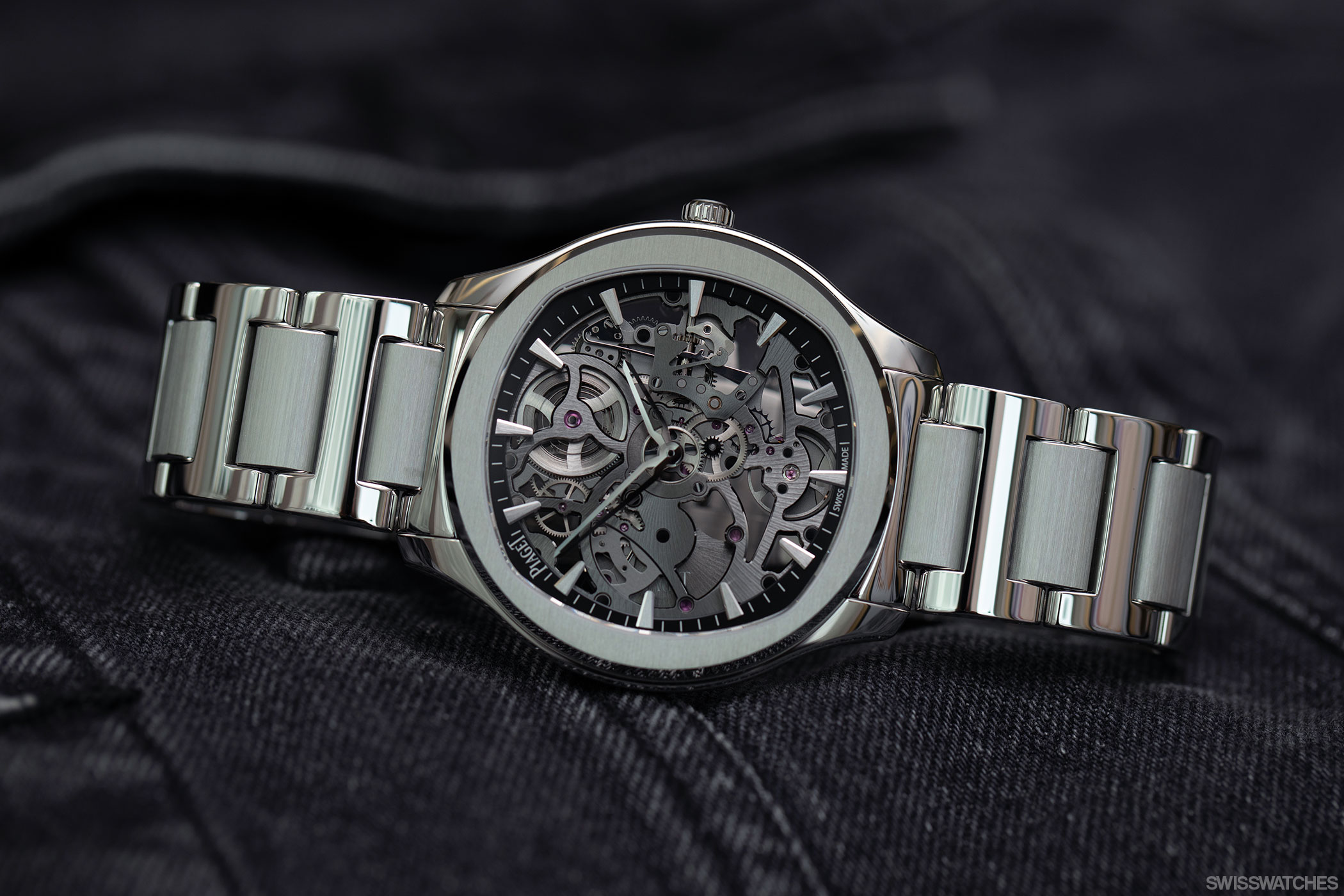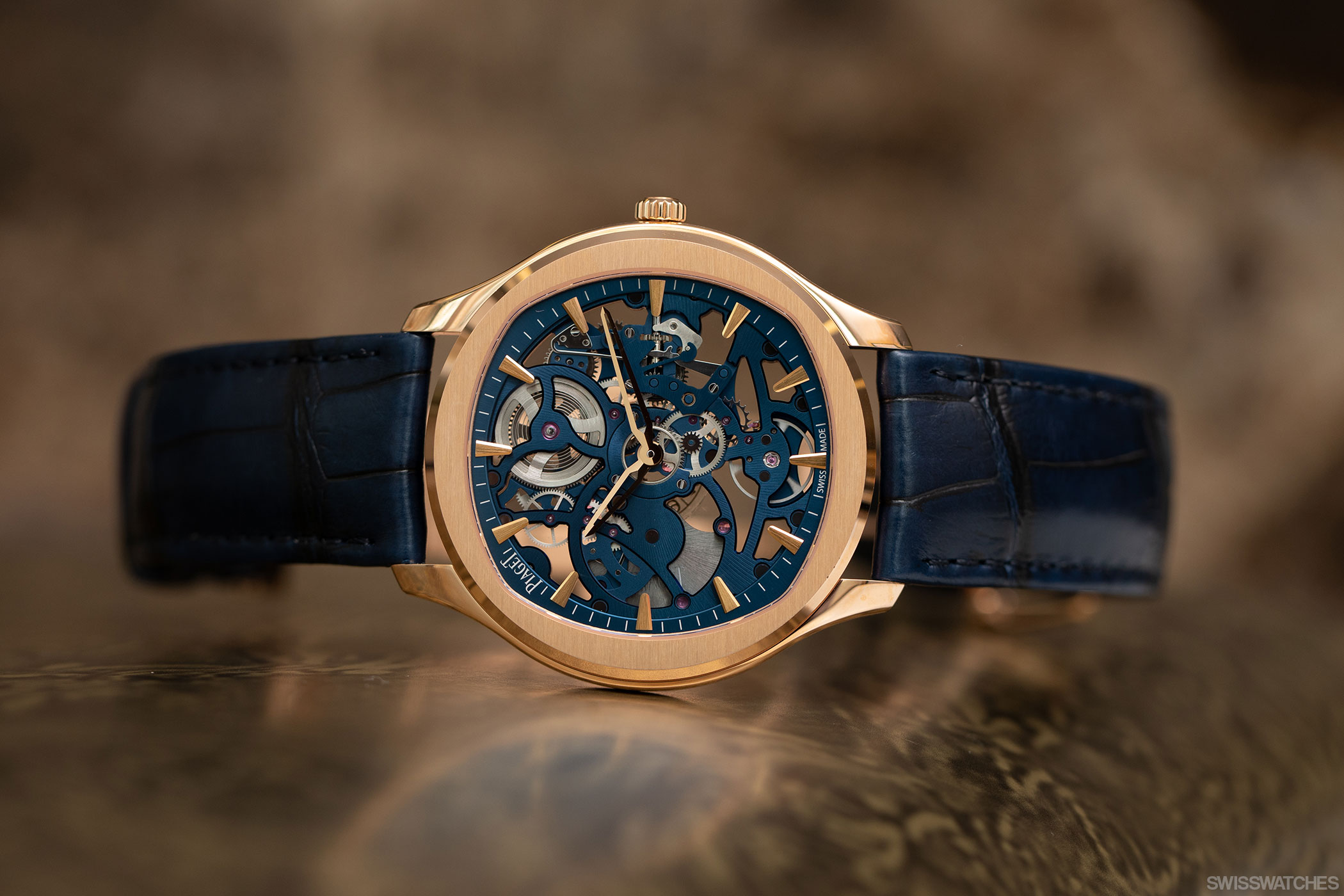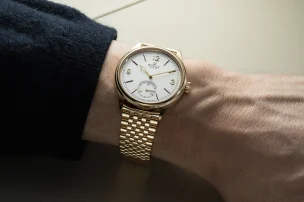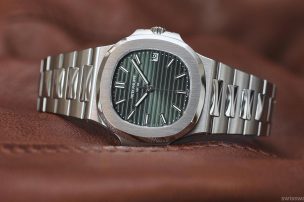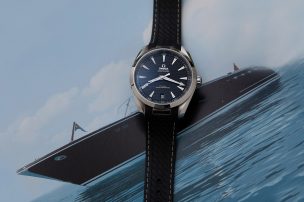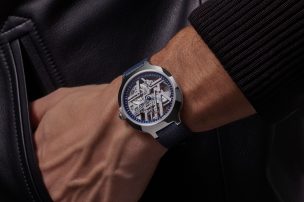
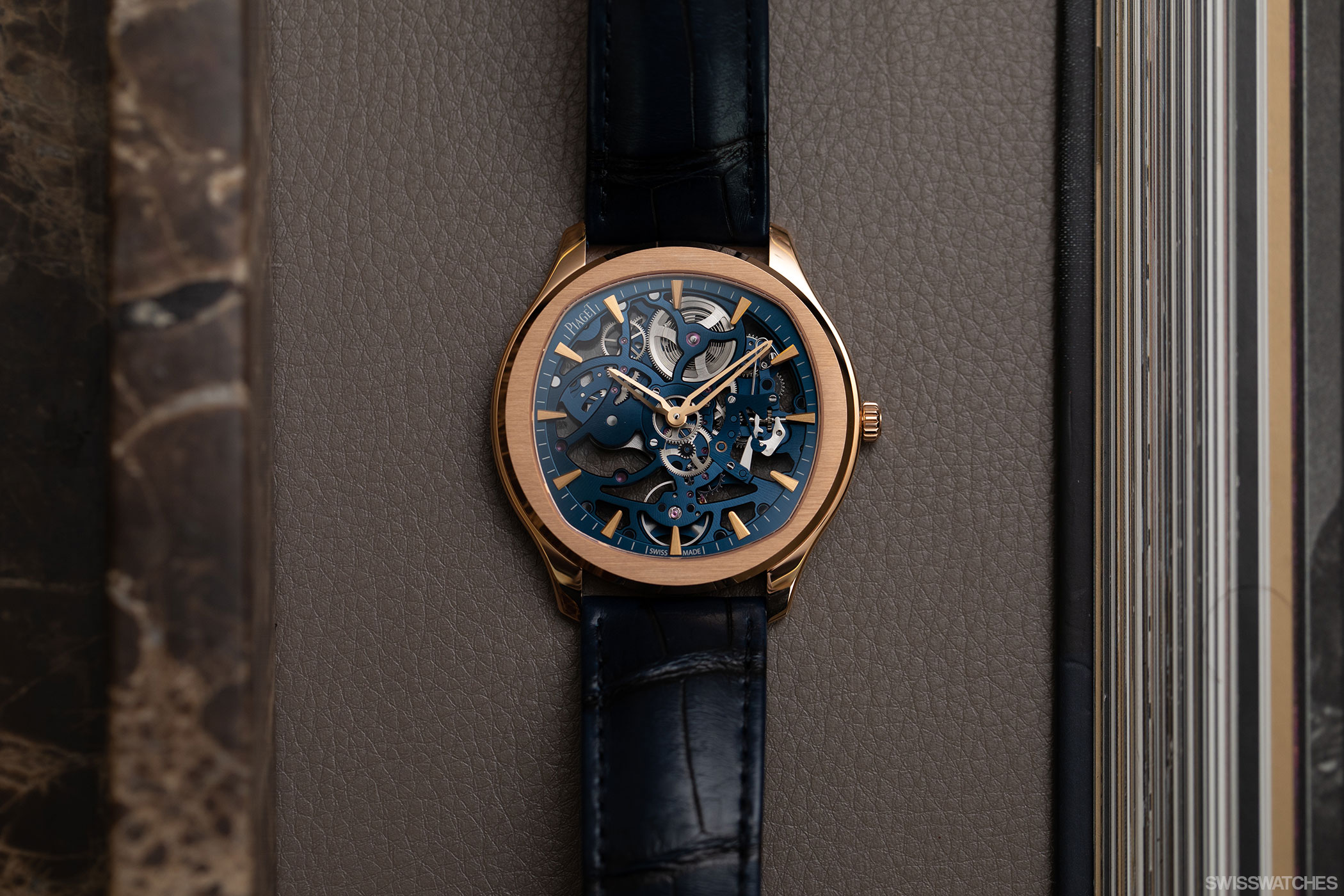
Piaget Polo: The Evolution And Revolution of a Watch Classic
July 14, 2016, was a particularly memorable day for Yves Piaget, the fourth and final direct descendant of the founding family of the eponymous watch and jewellery manufacture. For the launch of the Piaget Polo S, he returned to the place where he caused a sensation with a spectacular campaign in 1985, when he was still the head of Piaget. To promote the Piaget Polo, which he designed in 1979, Yves Piaget had his own Polo team ride down Fifth Avenue in Manhattan on horses. A good 30 years later, the next coup came in New York, when, amid a flurry of flashes from photographers, stars such as Ryan Reynolds and Michael B. Jordan appeared for the first time with the Piaget Polo S on their wrists, heralding a new era for the line. It was the first Piaget Polo ever made of stainless steel. In other ways, too, the modern-day design of the Piaget Polo S – and all future Piaget Polo models appearing from 2016 onwards – has changed fundamentally since 1979.
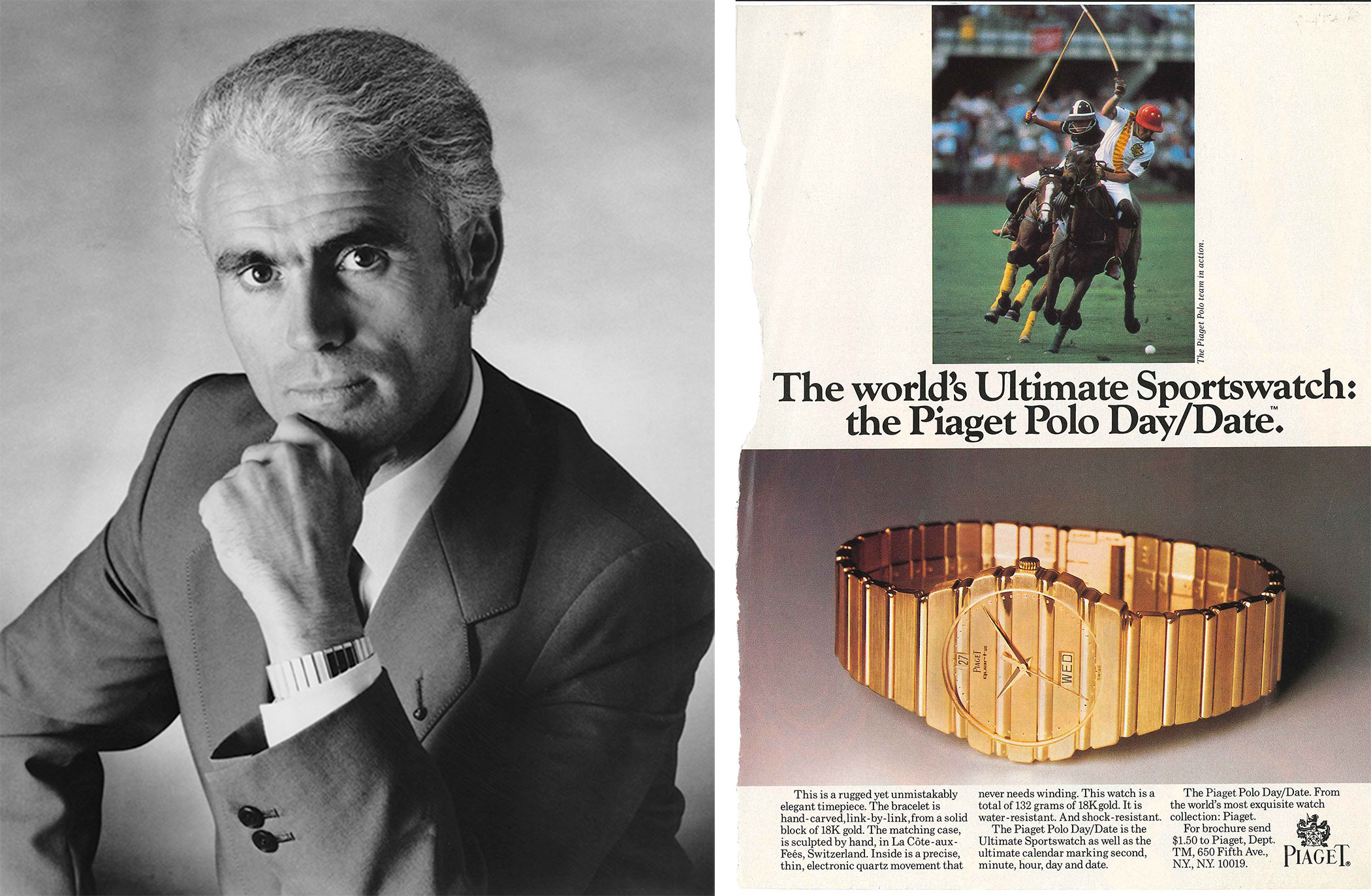
The Original
In Yves Piaget’s day, model names were still unusual at the horology house. The sports watch with its integrated bracelet initially had no name at all, only a reference number. It was only for marketing reasons that Piaget later decided to christen the watch ‘Piaget Polo’. Reference 761C701, as it was called, was distinguished not only by its solid 18-carat gold case and bracelet, but also by the distinctive gadroons on the case and dial. There had been nothing like this before, and it demonstrated the Haute Joaillerie side of the watchmaker for which Piaget was so highly regarded from the 1950s onwards, in addition to its horological expertise. The integration of the bracelet into the case was so seamless and fluid, it was as if the watch had been made from a single cast – or simply consisted of the bracelet only. Yet the design of the watch is exceptional and highly crafted; the narrow spherical bracelet links highly polished and the flat larger block links brushed. The decoration is not only to be seen on the bracelet, but also extends to the case and dial.
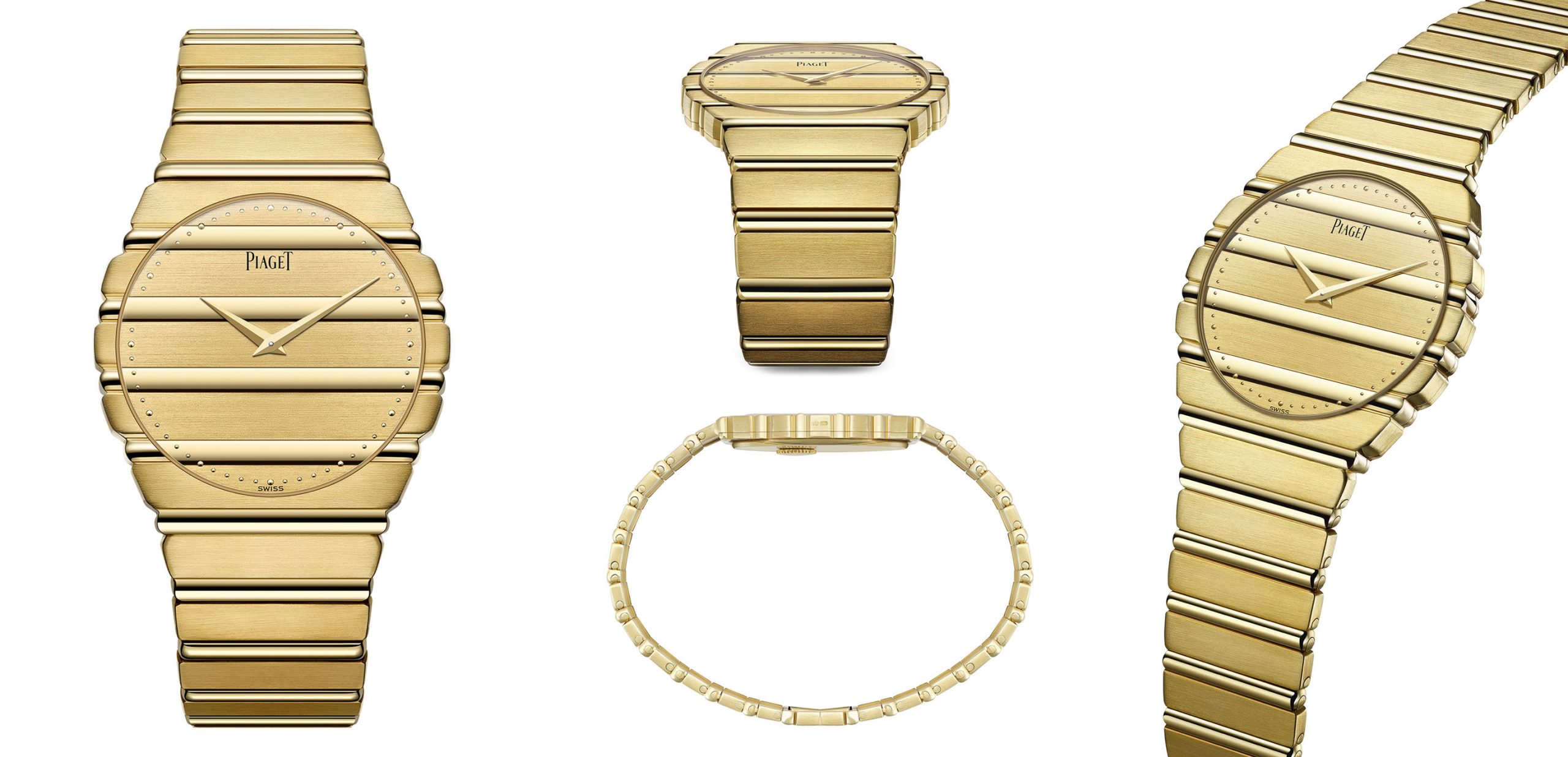
Reference 761C701
It was Piaget’s first sports watch – and yes, it was sporty, but at the same time outrageously elegant. When Yves Piaget created the watch, it perfectly matched the flair of the high society surrounding the watchmaker, which included celebrities such as Elizabeth Taylor, Miles Davis and Andy Warhol. The jet set of the 70s and 80s also included the sport of polo, which Yves Piaget partook in so passionately, and which ultimately became the inspiration for the watch line. ‘Athletic, demanding and precise’ was how Yves Piaget once described the equestrian sport, seeing it as a perfect symbiosis for the eponymous watch collection. A symbiosis between sport and luxury.

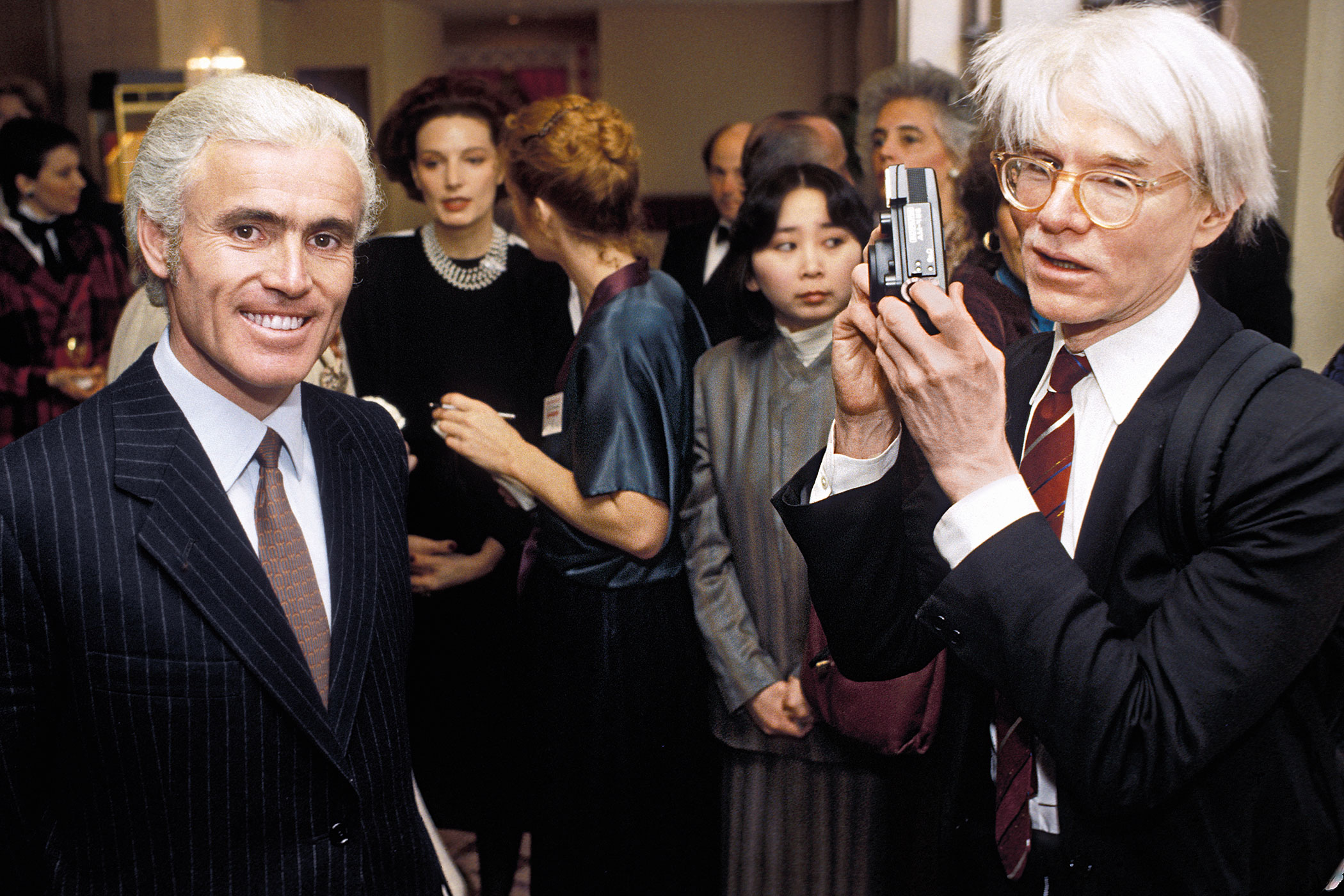
The evolution of the Piaget Polo
The transformation of Piaget Polo was not sudden, but evolutionary. The history of the Piaget Polo can be divided into three eras; from 1979 until Piaget was acquired by the Richemont Group in 1988, from 2001 to 2015, and from 2016 to the present, with several distinctive models standing out.
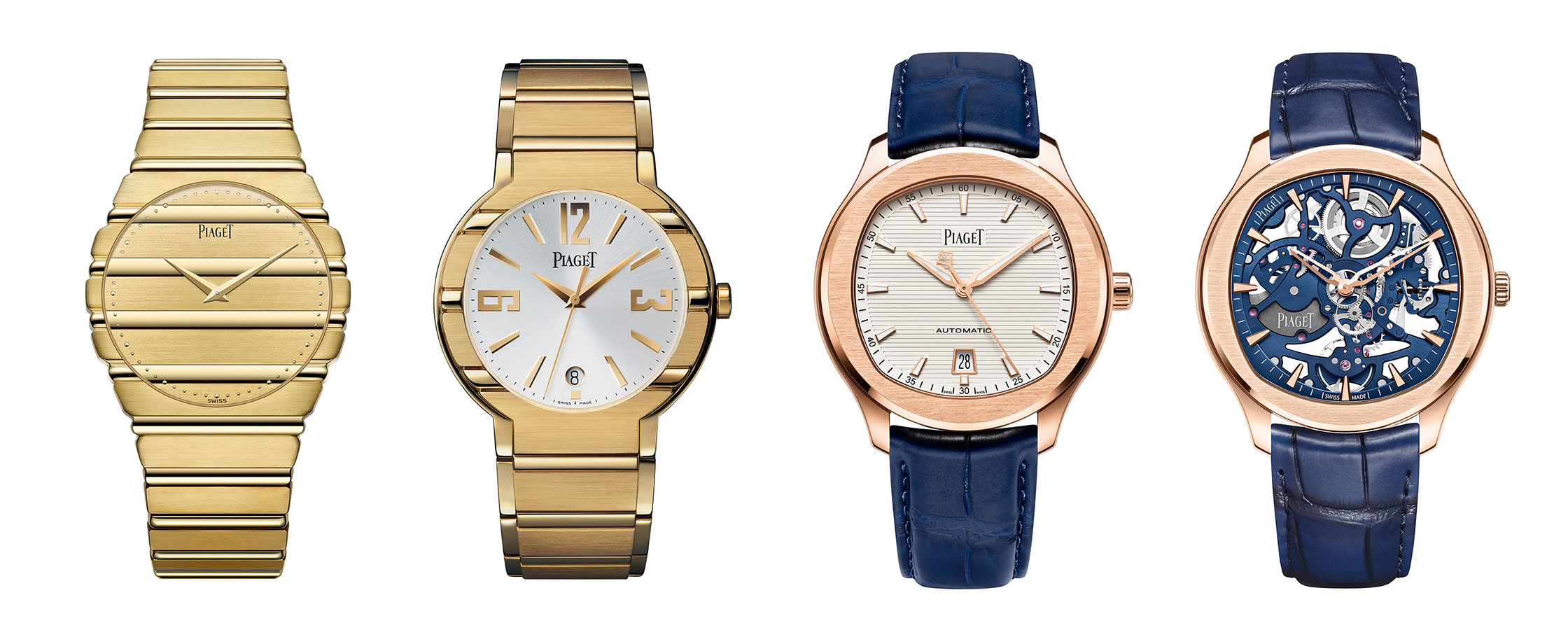
Two watches, not yet in existence
As mentioned, the Piaget Polo was launched as Reference 761C701 in 1979. In addition to the round watch, there was also a square, slightly larger Piaget Polo; the Reference 7131C701. However, it was the round model was truly trend-setting. Bucking the trend at the time for sports watches with integrated stainless-steel bracelets, Yves Piaget opted for a timepiece made entirely of 18-carat yellow gold; very chic and weighing 132 grams.
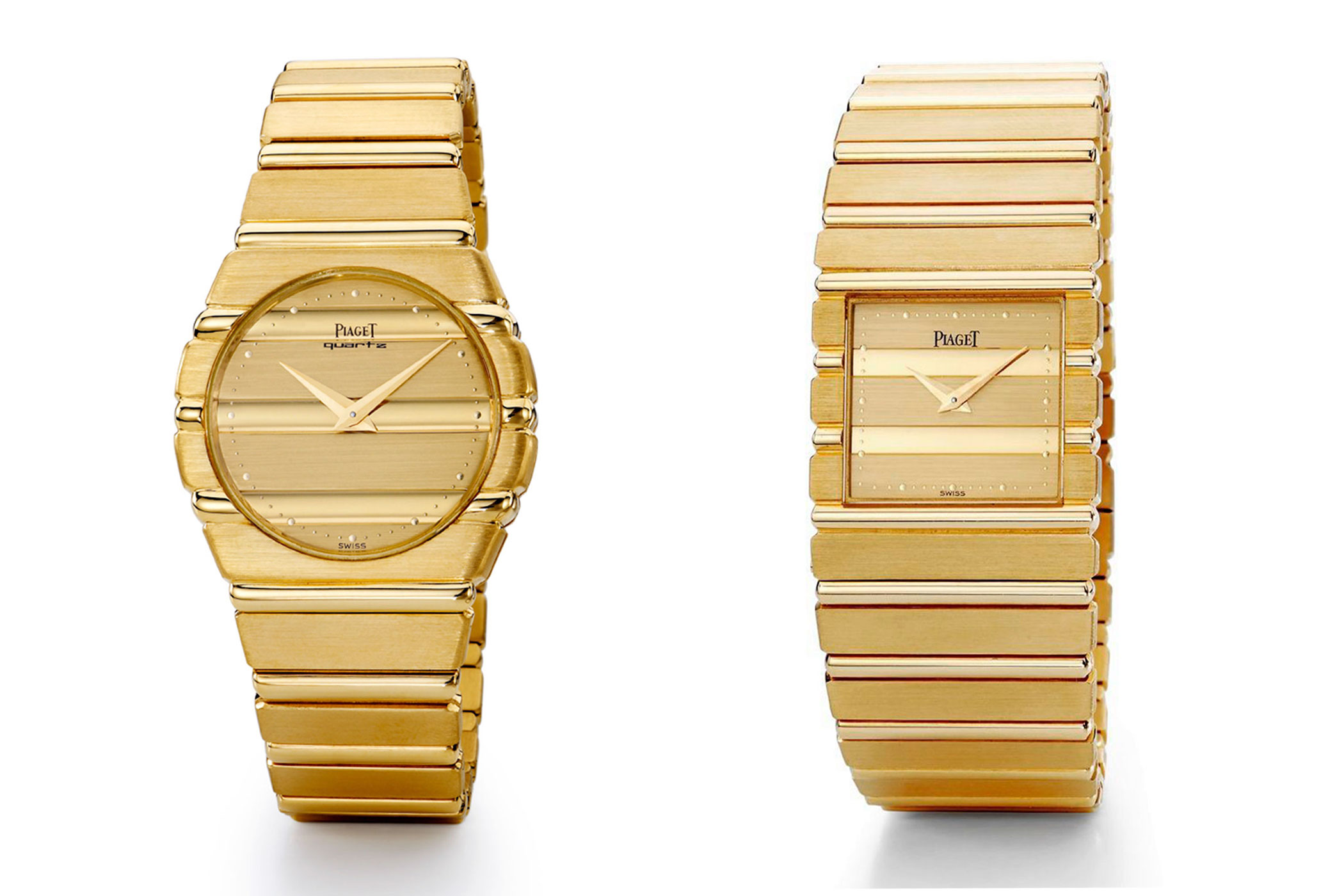
Reference 761C701 and Reference 7131C701
As the quartz crisis was hitting the Swiss watch industry hard at the time, the first Piaget Polo models were also equipped with an electronic movement. Yet they didn’t want to simply fall back on a Japanese quartz movement, therefore developing (as early as 1976) the manufacture 7P movement in the small Swiss village of La Côte-aux-Fées, also known as the world’s thinnest quartz movement at the time (3.1 mm). Piaget has not only been a specialist in movement production since its founding in 1874, but also a pioneer of ultra-thin construction. We remember the legendary ultra-flat hand-wound movement 9P in 1957, with an overall height of just 2 mm, followed by the ultra-flat automatic calibre 12P in 1960, which was the world’s flattest automatic movement at the time, measuring just 2.3 mm. Other world records followed. In 1980, four years after the appearance of the 7P, Piaget introduced the 8P quartz movement with an overall height of just 1.95 mm, which was to run in the Piaget Polo models from then on.
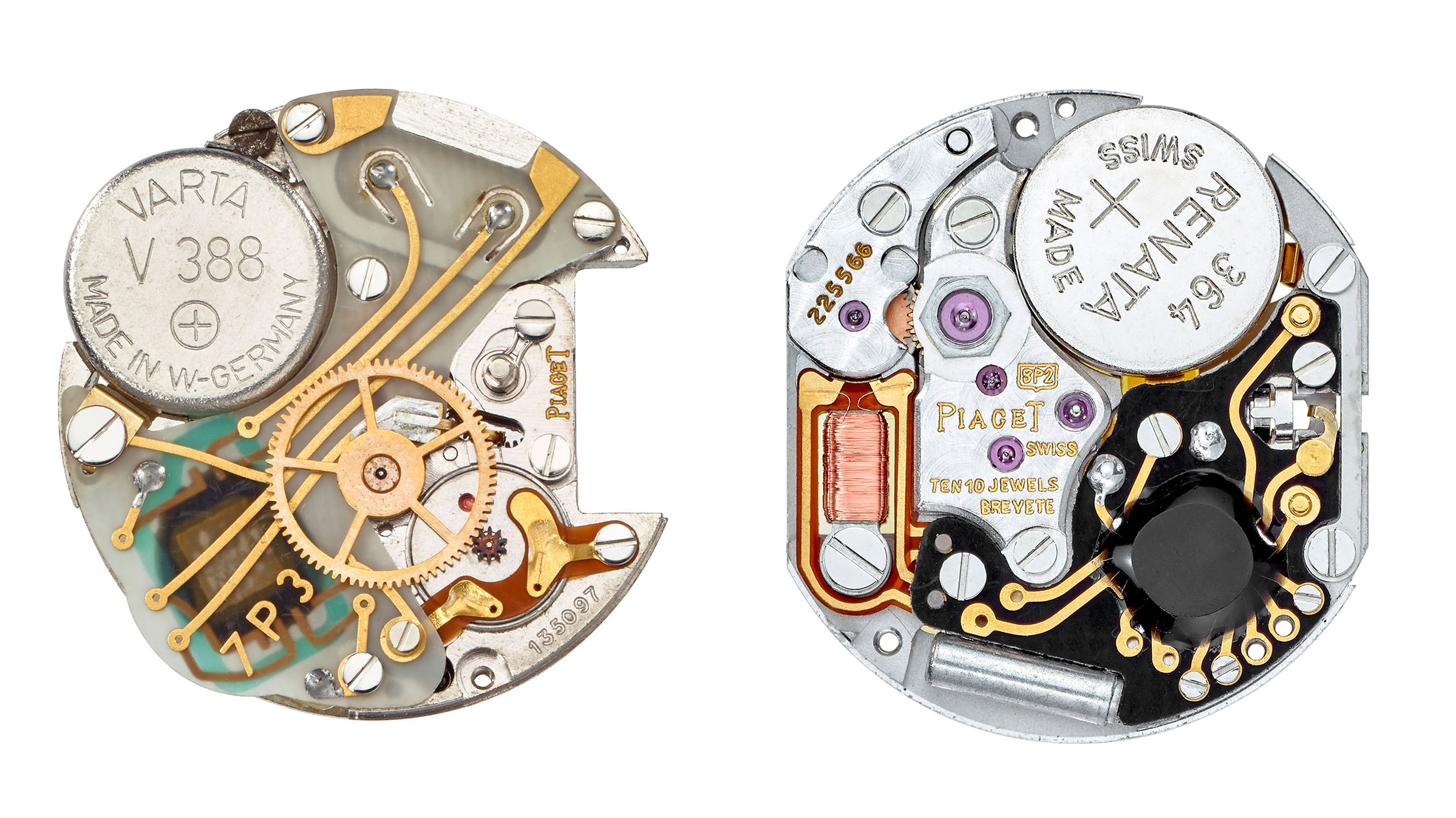
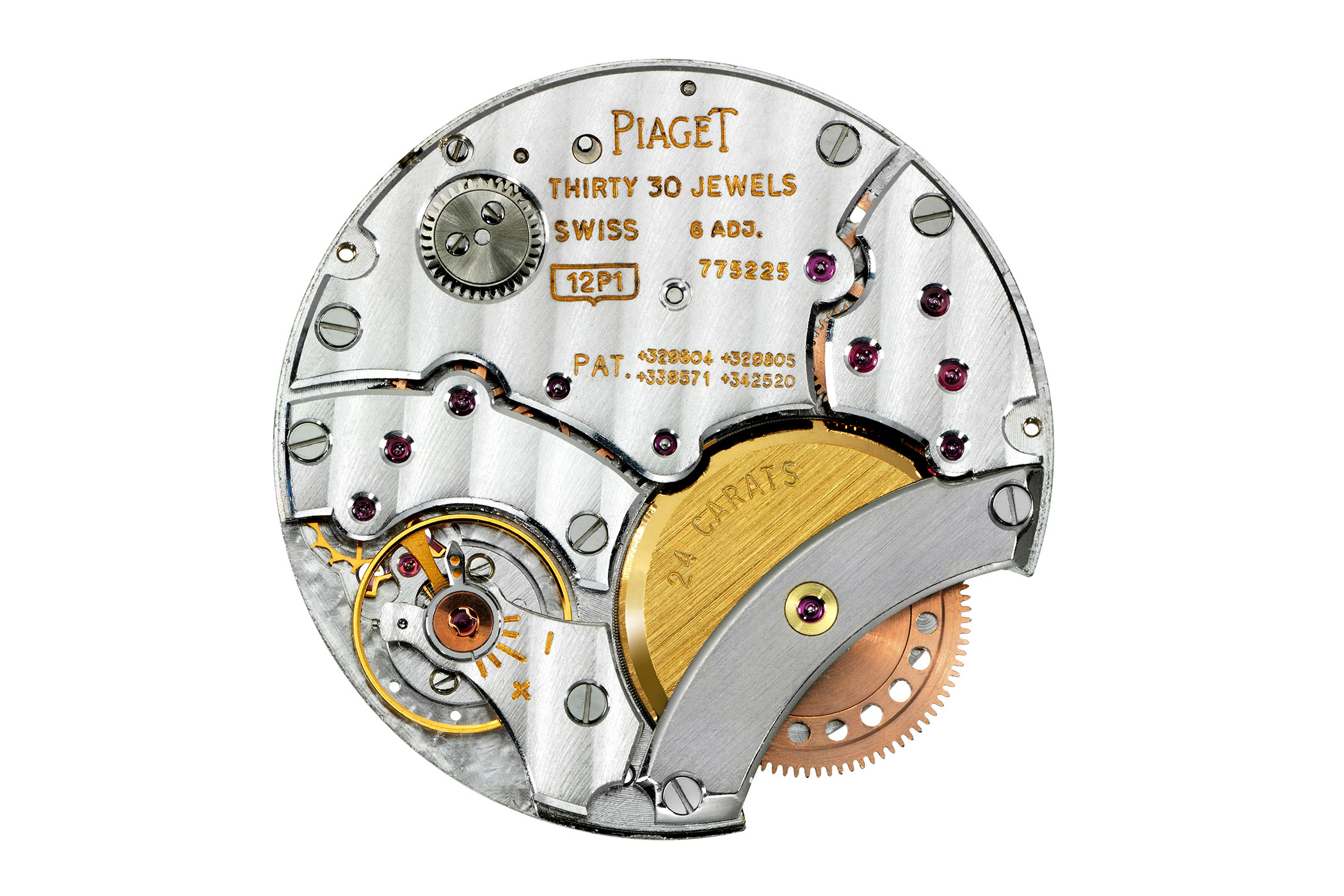
Piaget Polo was a resounding success in the jet-set cosmos surrounding the glittering life of Yves Piaget, not least because he was able to win over ex-Bond girl Ursula Andress as an ambassador for the Piaget Polo in 1980. At the 1980 World Polo Championship in Palm Beach, she presented the winner’s trophy with a Piaget Polo on her wrist. The pictures went around the world, promptly creating a new clientele. Then, in 1985, the outrageous ride through Manhattan’s Fifth Avenue.

Yves Piaget with ex-Bond girl Ursula Andress
2001: Facelift for the Piaget Polo
After Yves Piaget sold the company to the Richemont Group under Anton Rupert in 1988, the Piaget Polo went quiet for over a decade. It then returned with a big bang in 2001, with a larger diameter and distinctive Arabic numerals. But with the bracelet seamlessly integrated into the case and the gadroons at least still present on the bracelet and case, one could clearly see the connection to the 1979 original. It appeared in white and yellow gold, with a date display at 6 o’clock. The biggest update, though, was inside the watch. For the first time, the Piaget Polo ticked with a mechanical movement instead of quartz. The electronic 8P movement had to give way to the automatic 504P calibre, ushering in a new era for the Piaget Polo. However, the smaller models continued to run on a quartz movement, calibre 690P, which is still in use today.
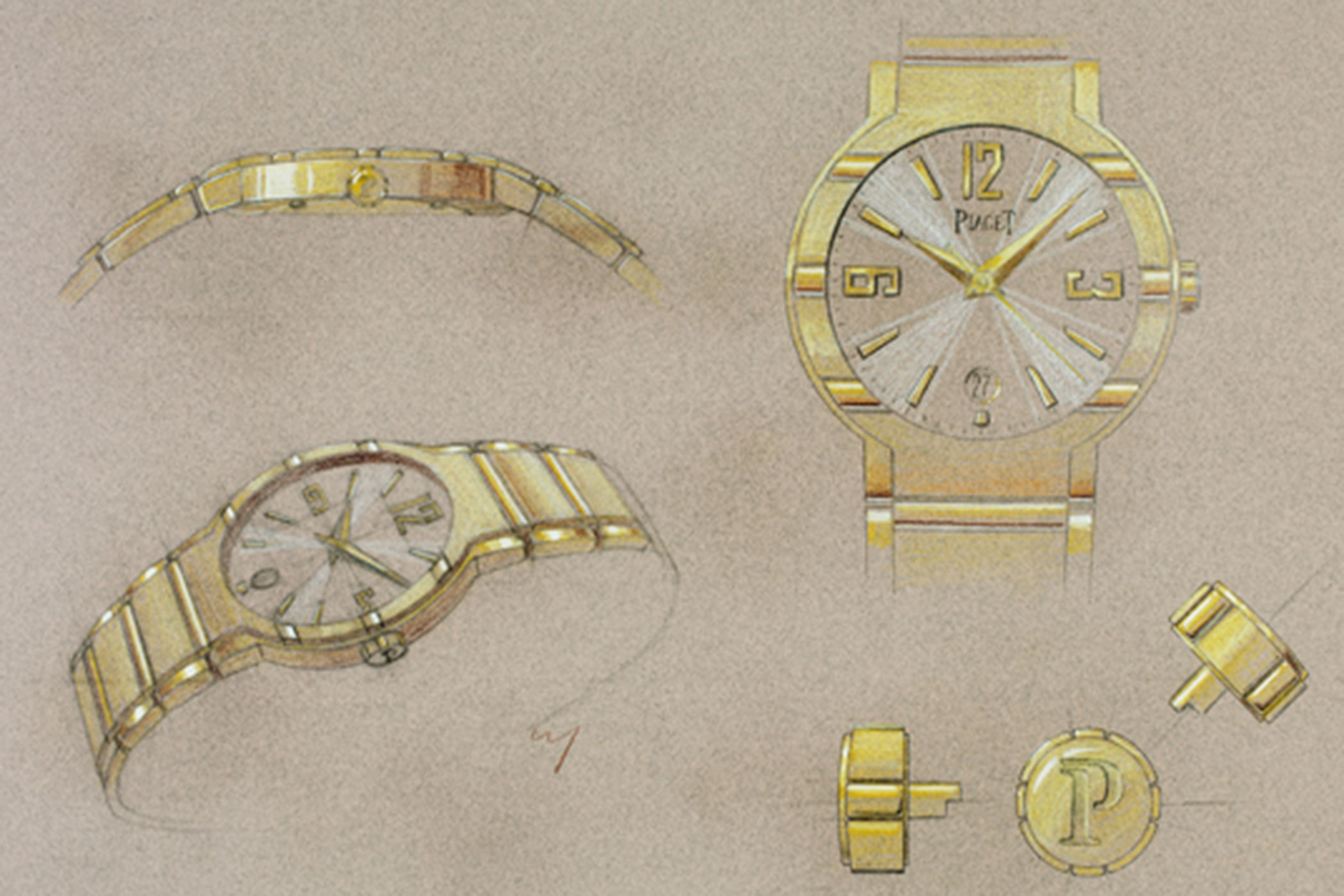
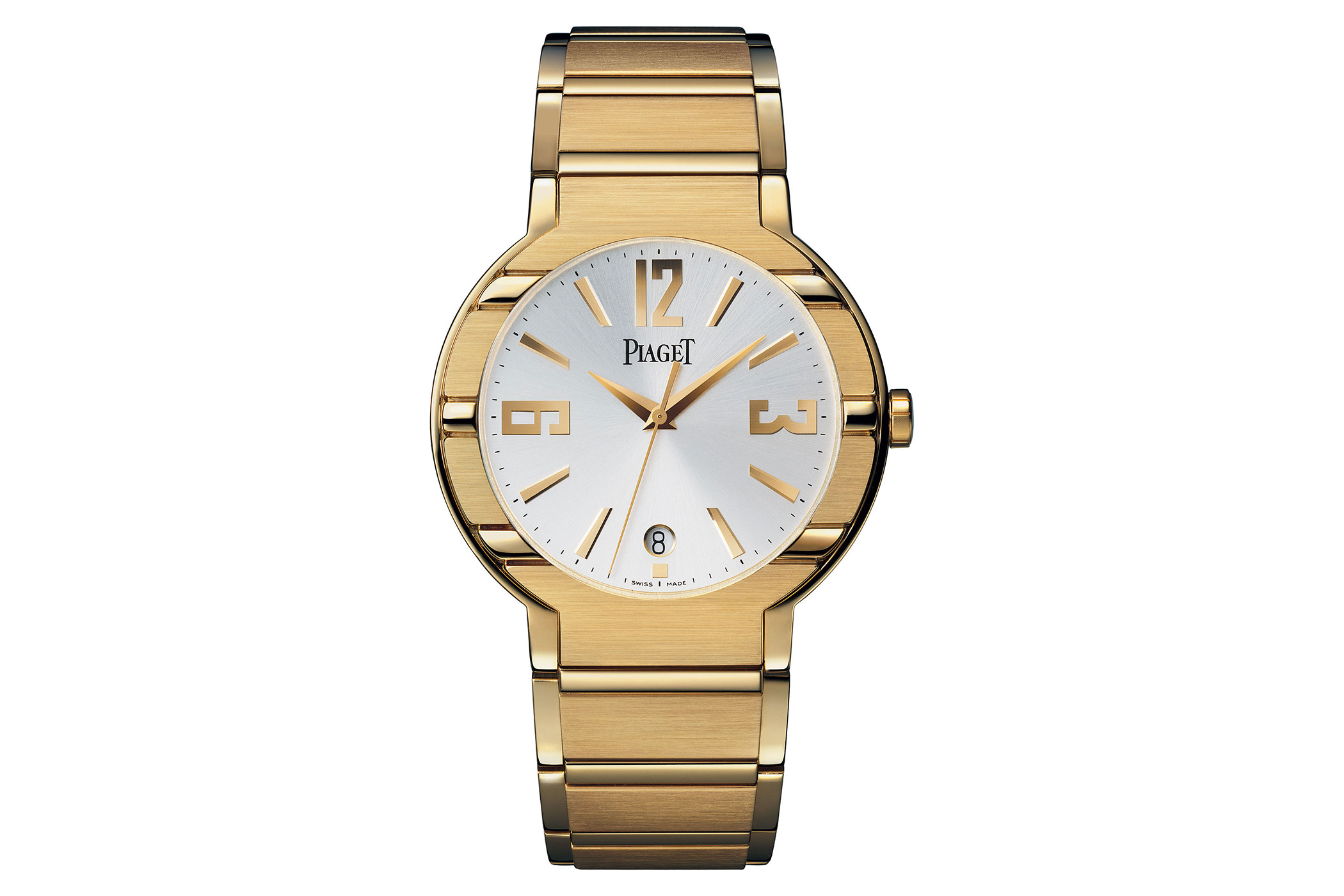
Piaget Polo Reference 27700
Also worth a mention in this era of the Piaget Polo is a one-off piece launched in 2007 to mark the restoration of the watch tower in Venice’s Piazza San Marco, a partnership that Piaget has enjoyed with the city for many years. The Piaget Polo Tourbillon Relatif (G0A31164) in Venetian blue features a flying tourbillon on the minute hand, which aesthetically appears to be completely detached from the movement inside. Visually as well as technically, the watch proved absolutely revolutionary for the line. In the following years, several other special editions of the Piaget Polo Tourbillon Relatif were introduced.
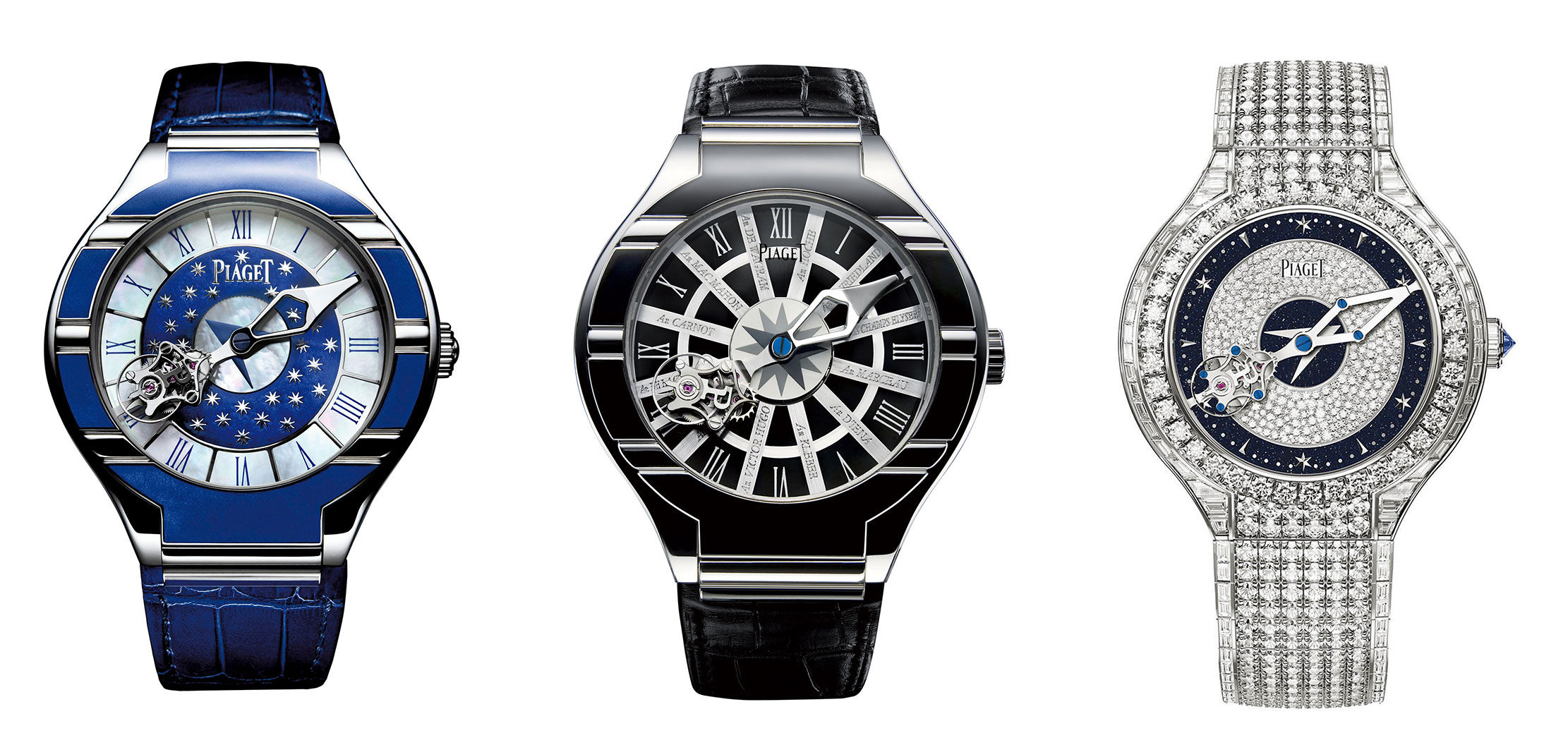
On the occasion of the 30th anniversary of the Piaget Polo, another decisive facelift took place in 2009, which may have taken some getting used to for some. The Piaget Polo FortyFive (Ref. G0A35010) not only had an oversized case with a diameter of 45 mm, it was even made of titanium. Rubber was incorporated into the Piaget Polo-typical link bracelet, marking an interruption in terms of style for Piaget. It was also a new era in which materials were used more democratically, with watchmakers were happy to experiment.
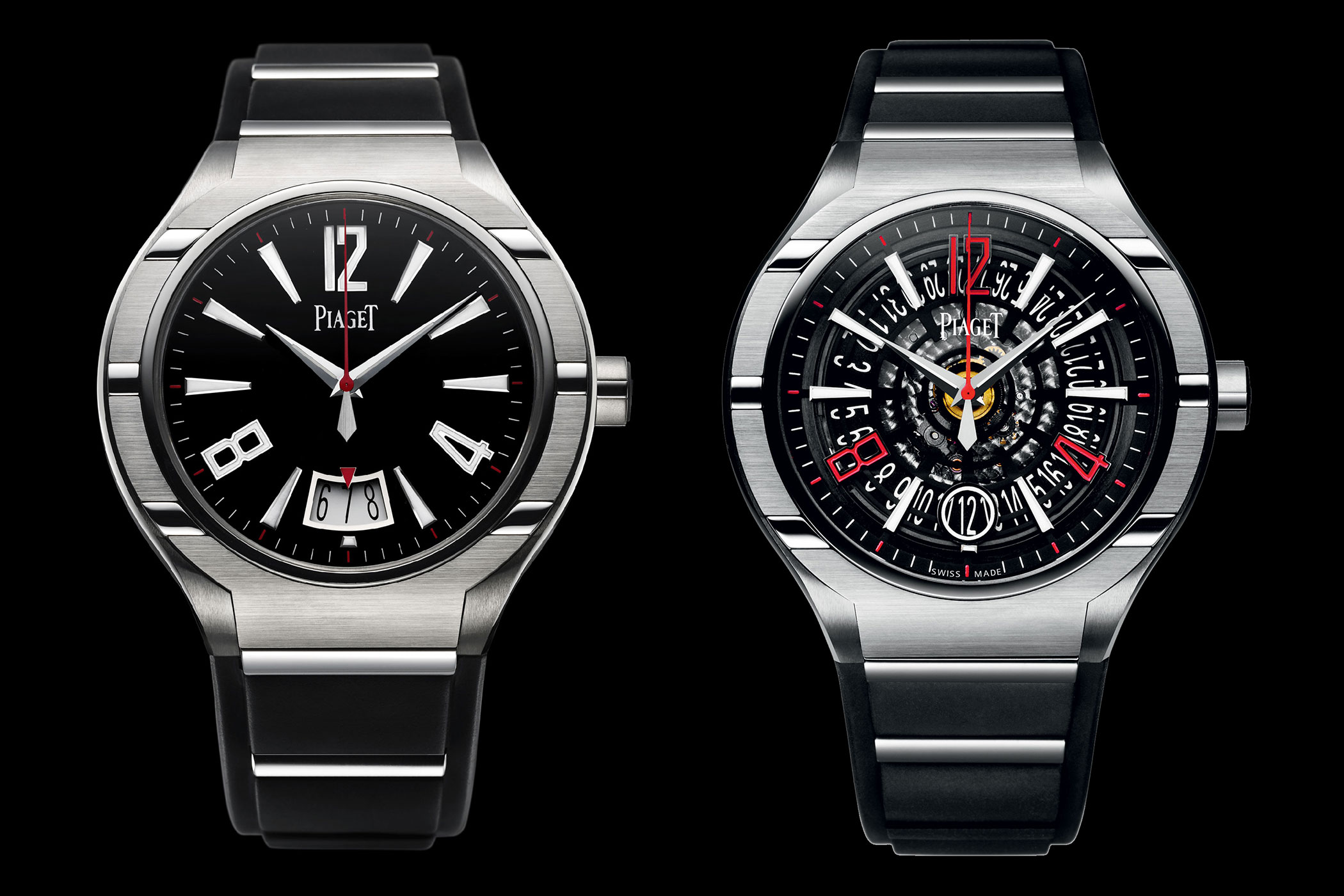
In the Piaget Polo FortyFive range, Piaget once again demonstrated all its expertise in ultra-thin movements. It also ushered yet another new era for the Piaget Polo. For the first time, it appeared with complications that were included in the core collection as non-limited models or one-off pieces (like the Tourbillon Relatif). In addition to the three-hand version with date, a chronograph (Ref. G0A35001) also appeared, and in 2011, a perpetual calendar (Ref. G0A36001) followed behind. The Piaget Polo FortyFive Chronograph was the first to use the ultra-thin manufacture calibre 880P, which was introduced by Piaget back in 2007 to mark 50 years of ultra-thin movements. It offers a flyback chrono with a 50-hour power reserve and is just 5.6 mm high.
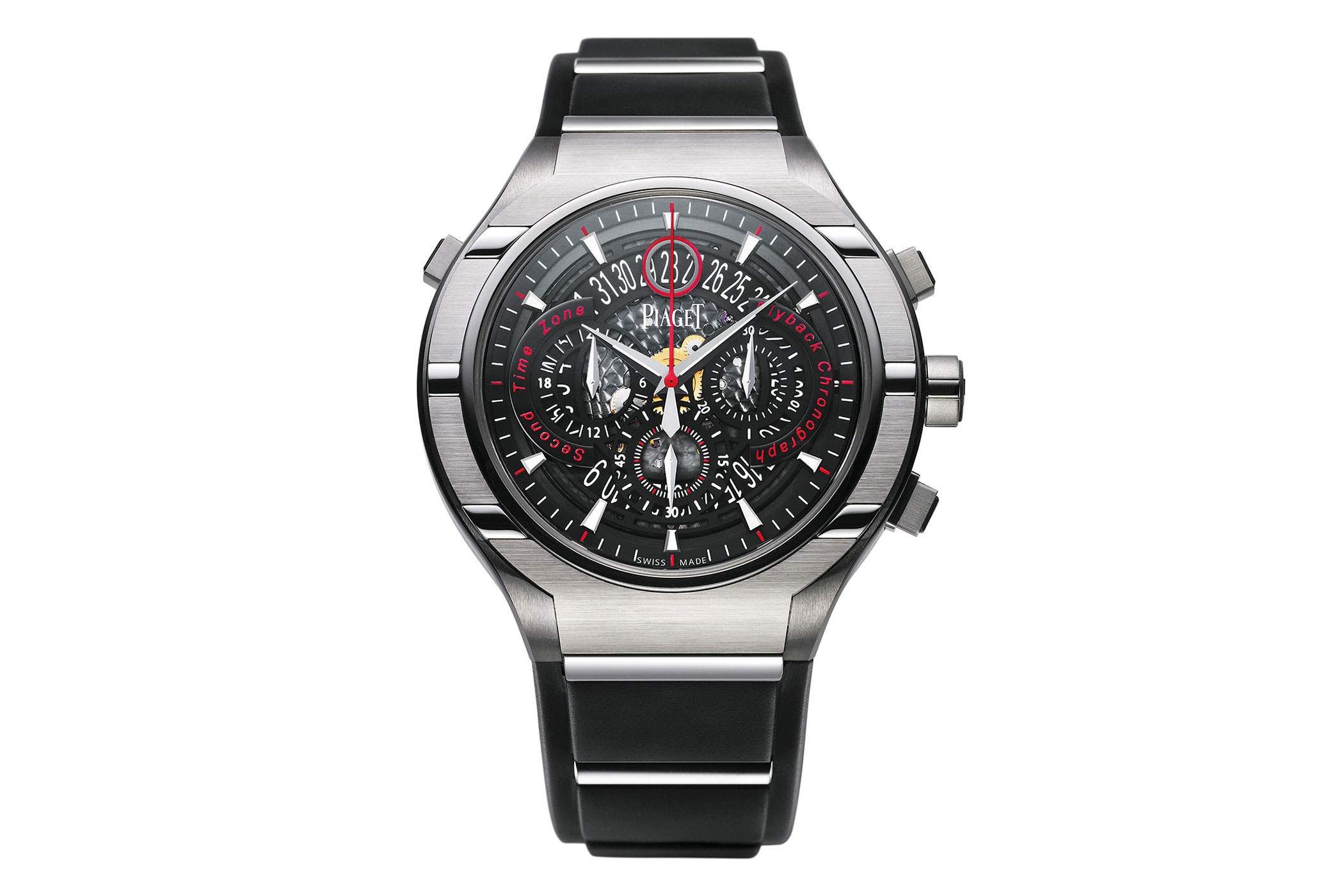
Piaget Polo FortyFive Chronograph
The Piaget Polo FortyFive Perpetual Calendar is equipped with the manufacture 855P movement, which is one of the thinnest self-winding mechanical movements with a perpetual calendar, measuring just 5.6 mm in height. Two features stand out here in particular. First, in addition to the calendar function, the calibre 855P also offers a second time zone, located at the 8 o’clock position. Secondly, the day of the week and the date are displayed via a retrograde display. This combination is unique in watchmaking.
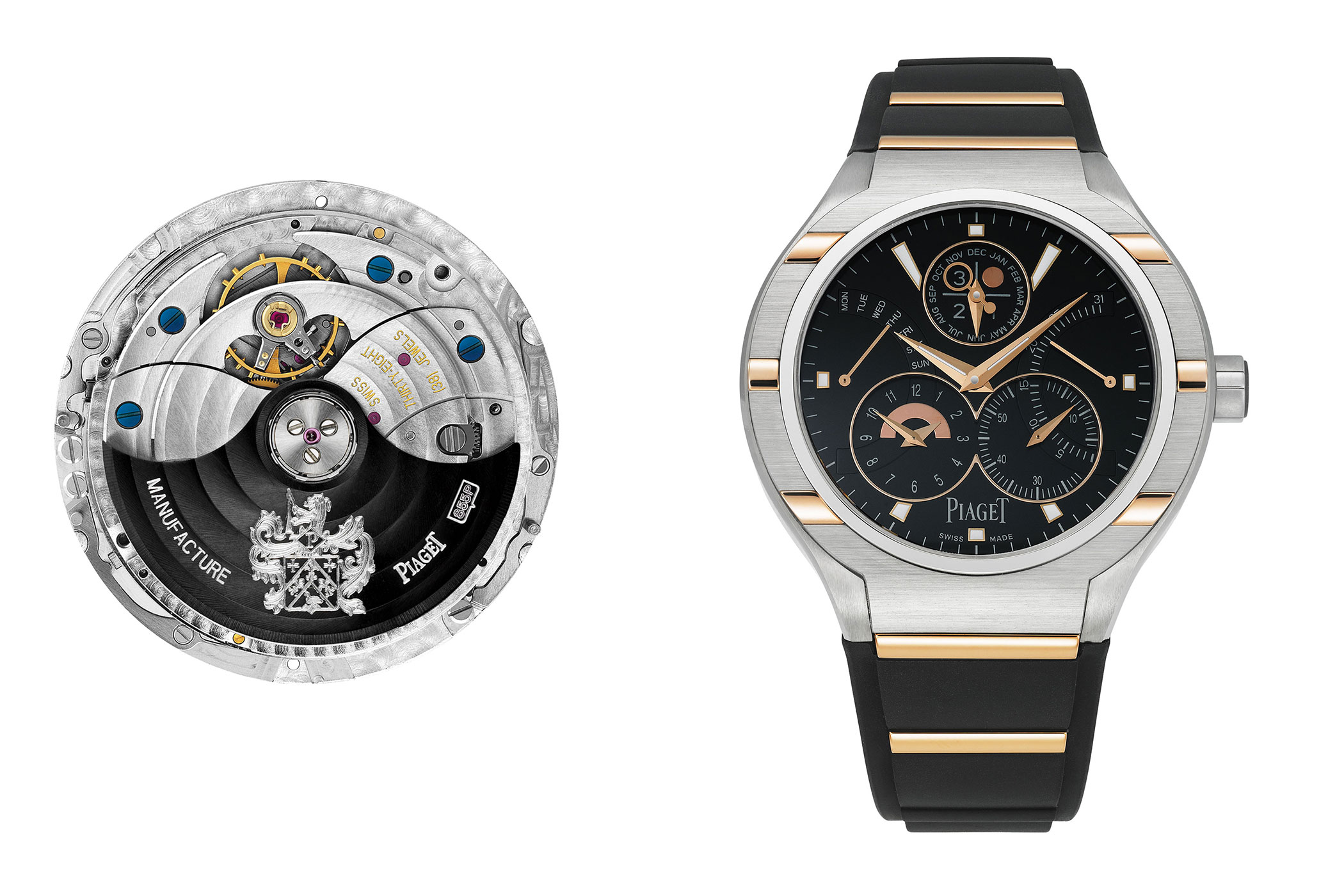
Piaget Polo FortyFive Perpetual Calendar
2016: The Piaget Polo Revolution
Piaget announced a major launch in July 14, 2016, yet there was no anniversary to celebrate, nor was 2016 otherwise a particularly historically relevant year for the watchmaker. But 2016 has since earned a place in the annals of the company, as a milestone in its more than 150-year history, for it marks the birth of the Piaget Polo S, an entirely new kind of Piaget Polo.
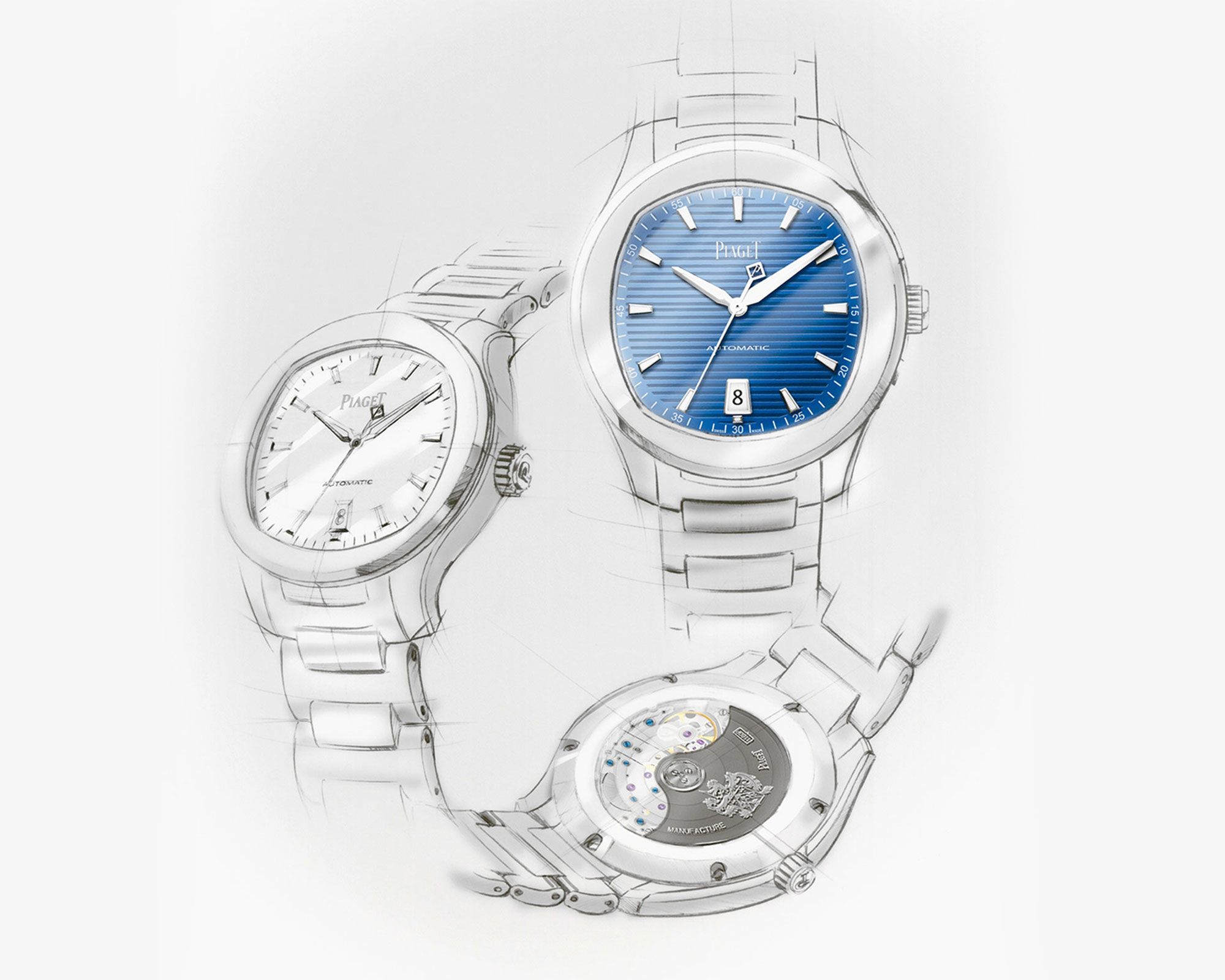
What remains of the Piaget Polo of yesteryear is certainly its sporty look, with its integrated bracelet. The new Piaget Polo S featured a cushion-shaped dial in a round case, admittedly more reminiscent of Piaget’s Emperador line. The dials were guillochéd horizontally, presumably as a nod to the gadroons of the original Piaget Polo models that once ran through the case and dial. The ‘S’ in the model name stands for ‘Steel’, another first for the maison. Piaget had previously only made steel watches once between 2001 and 2007 for the Upstream collection, and for the Piaget Polo, the material was completely novel.
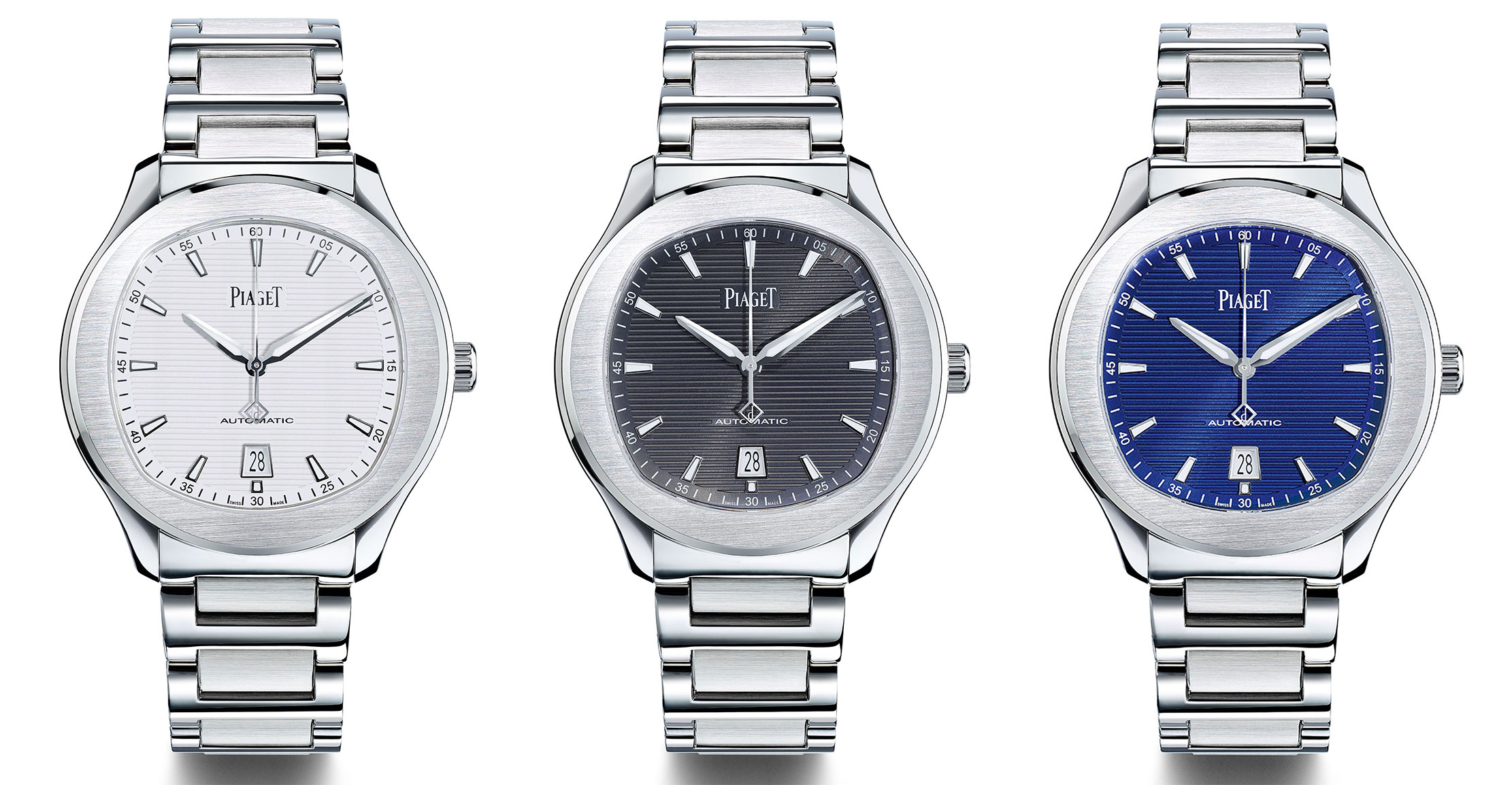
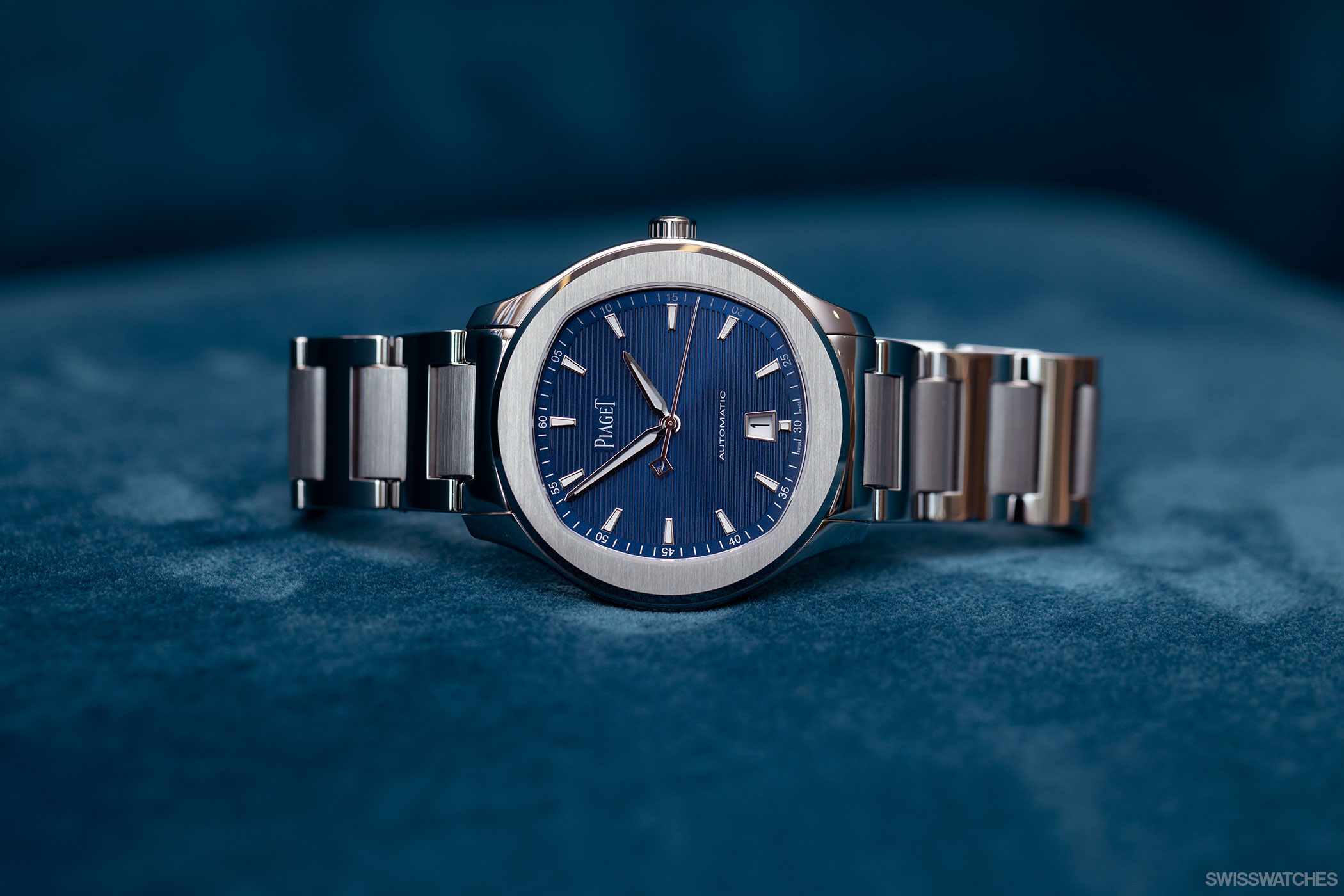
Piaget Polo Date
It was a bold move for the watchmaker to simply reinvent a classic and bestseller like the Piaget Polo, and the whole thing is topped off by the fact that they decided against an ultra-flat movement for the Piaget Polo S. After all, it is precisely this technology that has been trimmed to ultra-flat movements over the last five decades, not to mention having boasted the world’s flattest quartz movement in the very first Piaget Polo in 1979. It would have been only logical, after all, to have the ultra-flat calibre 1200P, for example. For the chronographs, Piaget could have used the ultra-thin calibre 883P, which was launched in 2015 and is the thinnest chronograph movement in the world at just 4.65 mm. For the Piaget Polo FortyFive, Piaget had also used ultra-flat movements.

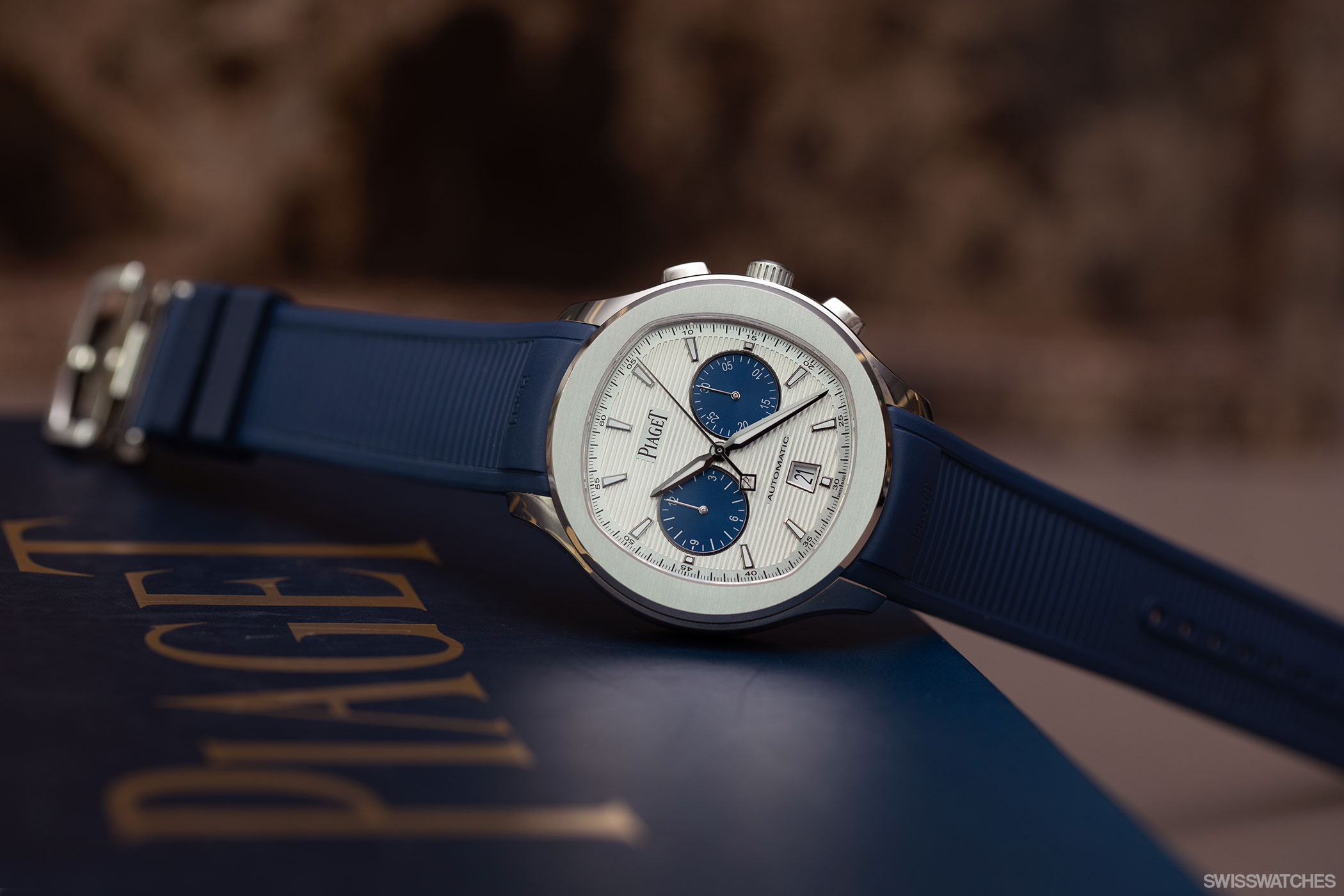
Piaget Polo Chronograph – limited to 888 pieces
Yet Piaget opted instead for the calibre 1110P, which also powered the first three 3-hand Piaget Polo S versions. In this case, it is not an in-house Piaget movement, but the Cartier 1904-PS MC – also part of the Richemont Group. Two chronographs were also launched with the calibre 1160P in silver or blue. This movement also comes from Cartier, and is based on the Cartier 1904-CH MC calibre. To a certain extent, the move is understandable and can be explained by the fact that Piaget wanted to appeal to a new, younger target group with a new unit price that is competitive. The best way to do that, of course, is to take advantage of synergies with existing movements in the group.
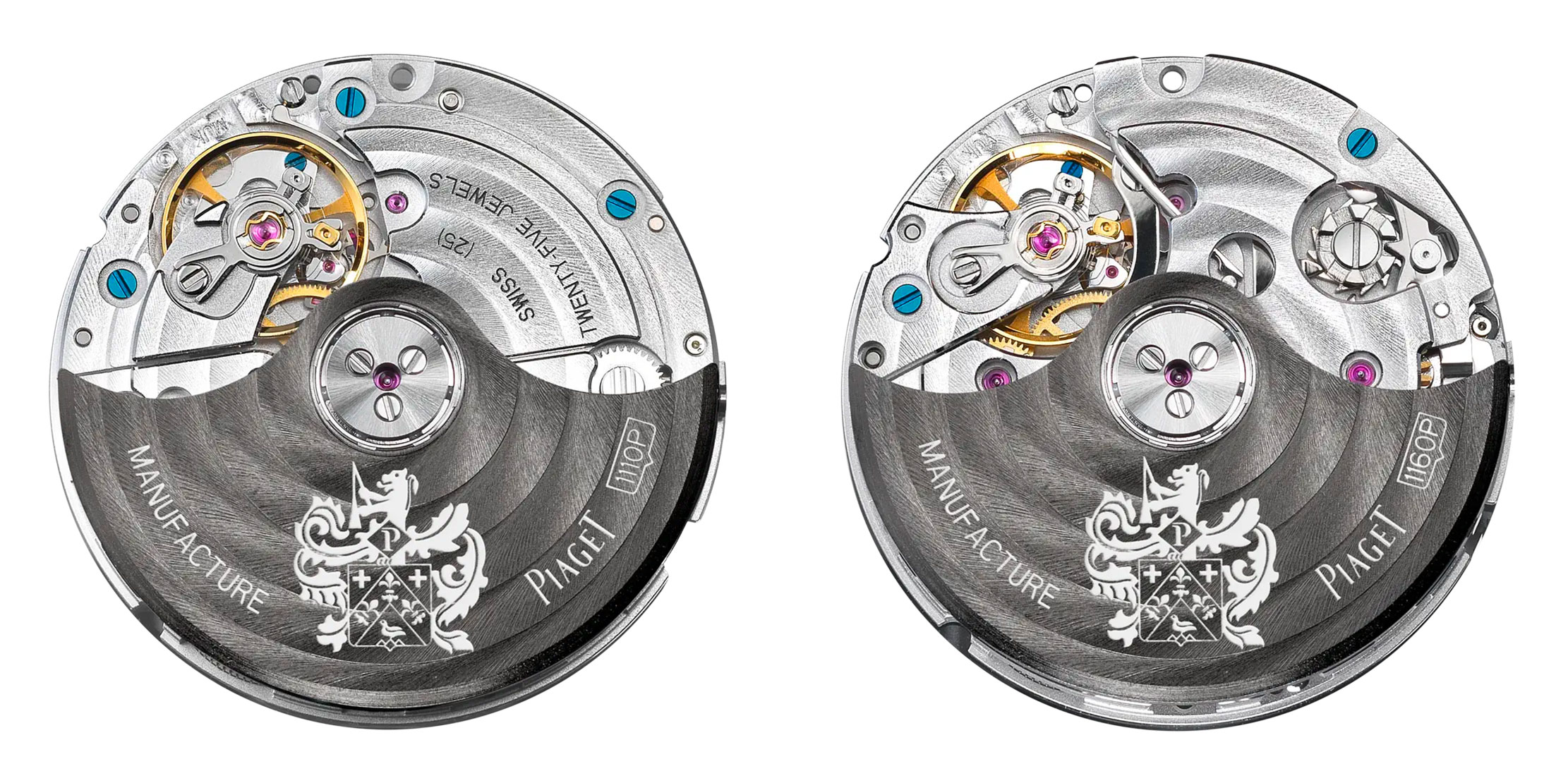
Piaget Calibre 1110P and 1160P
2021: The Piaget Polo gets an ultra-flat movement
For the Piaget Polo’s 40th birthday in 2019, there was no movement update, but a new Piaget Polo S in green as a limited special edition, which was extremely successful. Shortly thereafter, another green Piaget Polo with gold indices and hands followed, also being limited and pretty chic.
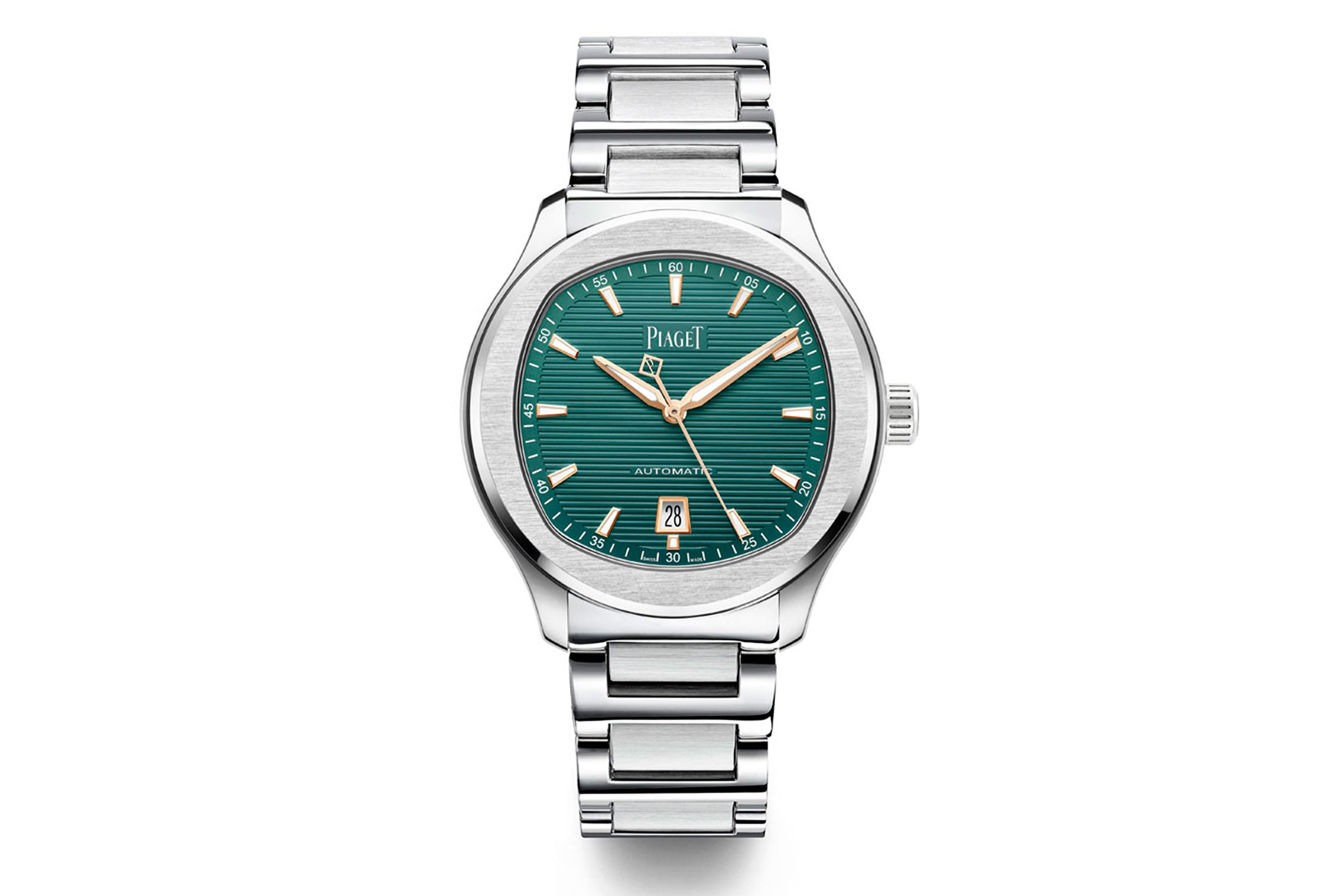
It wasn’t until 2021 that the Piaget Polo finally returned with a flat movement and case. For the Piaget Polo Skeleton, Piaget installed the 2.4 mm flat and skeletonized 1200S movement. The movement was developed and built entirely in-house by Piaget. Case height was reduced to a slim 6.5 mm for the new 1200S movement. The 2016 models still built 9.4 mm high.
By comparison, Patek’s Nautilus 5711 measures 8.3 mm case height, or its successor, the Reference 5811, only 8.2 mm. The Nautilus is definitely considered to be particularly wearable. Surely, it was only a matter of time before Piaget would install their calibre 1200S, introduced in 2013, in a Piaget Polo. It was originally designed for the Altiplano line, emblematic of the ultra-slim expertise of the house.
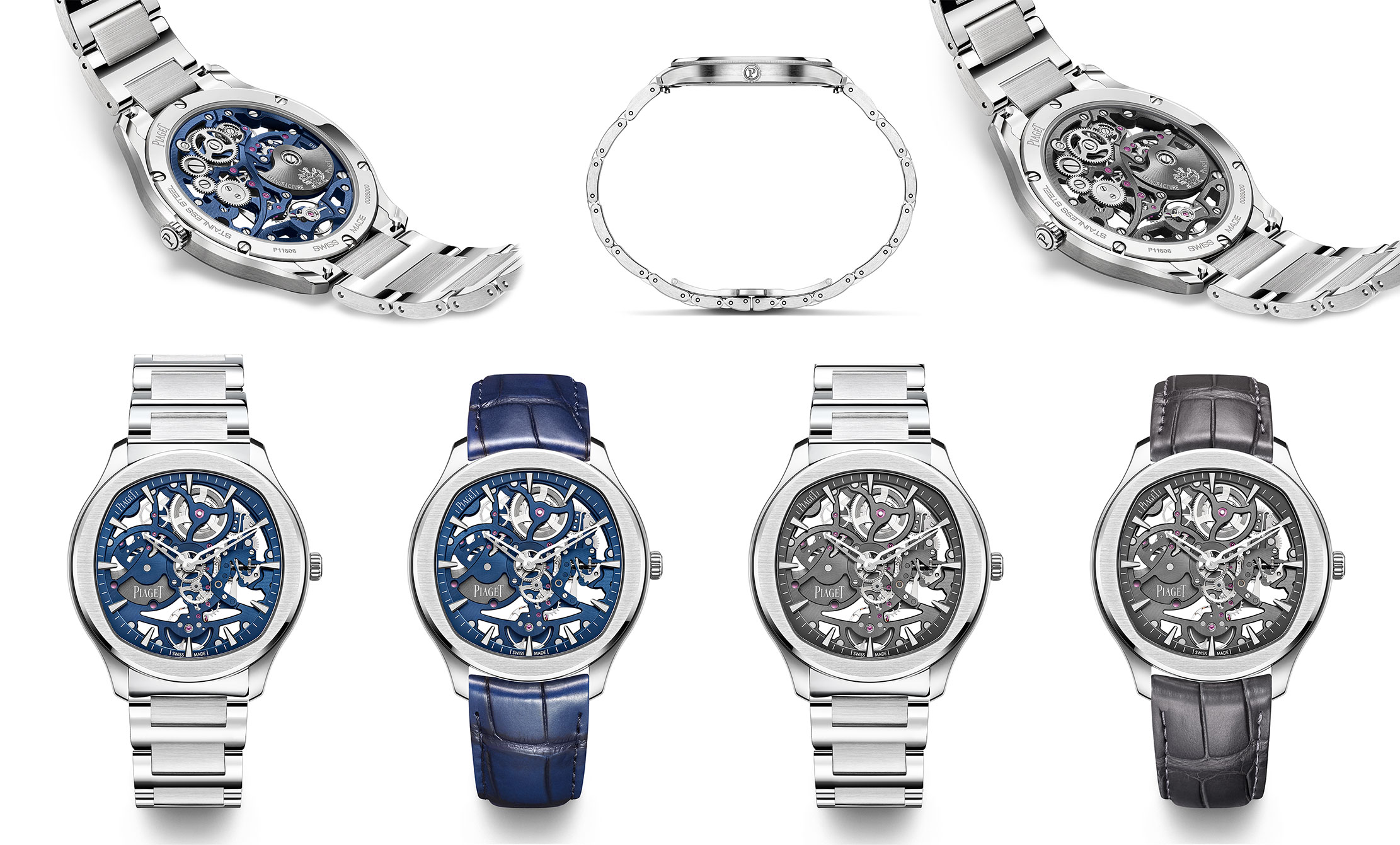
There is one Piaget Polo model that was way ahead of its time. Piaget has been skeletonizing movements since the 1970s. As part of their partnership at the Montreux Jazz Festival in 1986, the watch house designed a skeletonized Piaget Polo for festival founder Claude Nobs. Musician Miles Davis liked the watch so much that he borrowed it during his stay at the festival. Piaget bought the watch back at auction in May 2014.
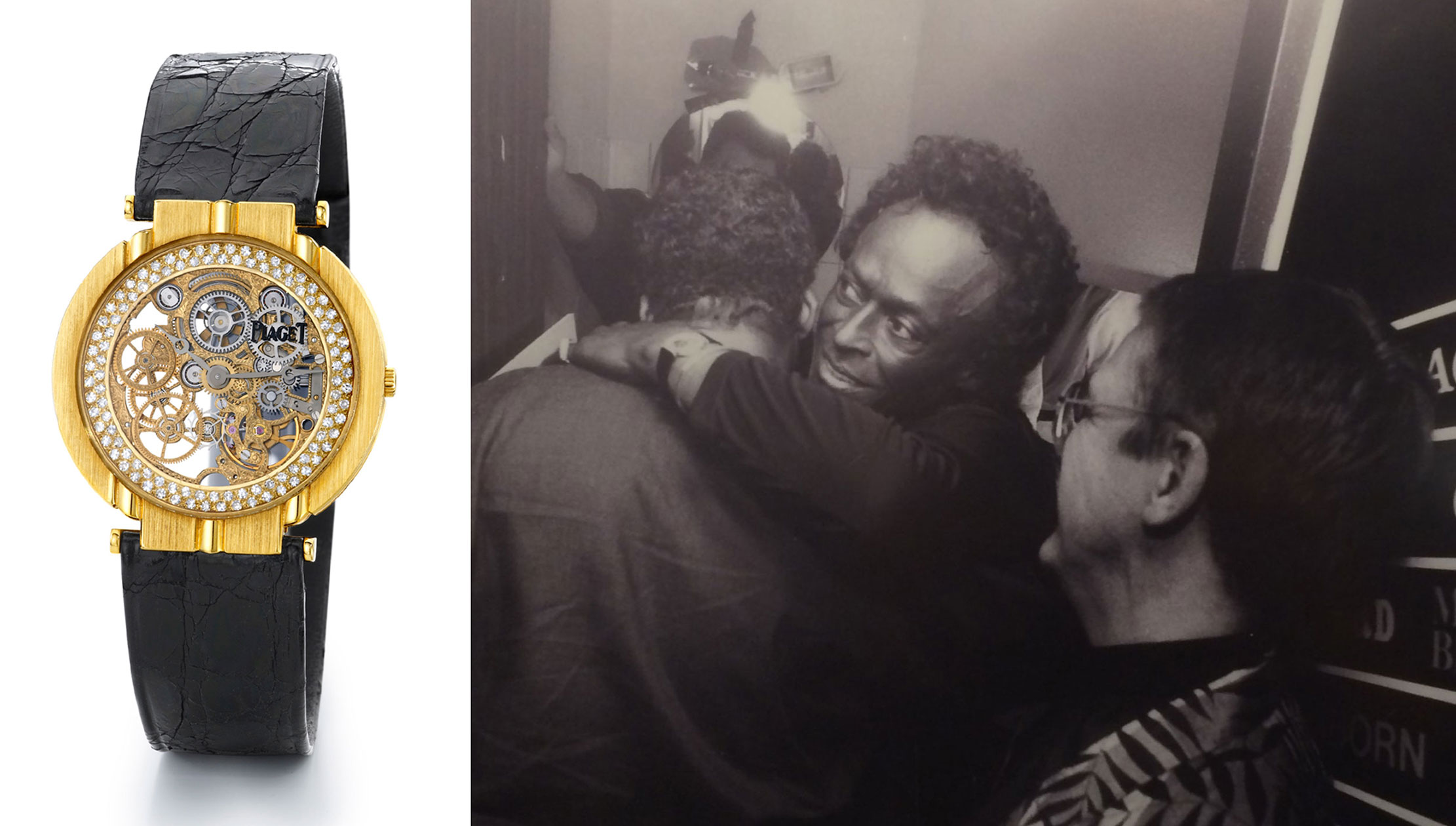
Piaget 2693 Squelette on the wrist of Miles Davis,
Montreux Jazz Festival in 1988
The 2021 Piaget Polo Skeleton was offered in two executions: with a blue or grey PVD-coated skeletonized movement in a steel case. Price-wise, Piaget has catapulted into another price league with its new ultra-thin and skeletonized models. It currently costs 31,500 euros. The Piaget Polo S, on the other hand, starts at 11,900 euros.
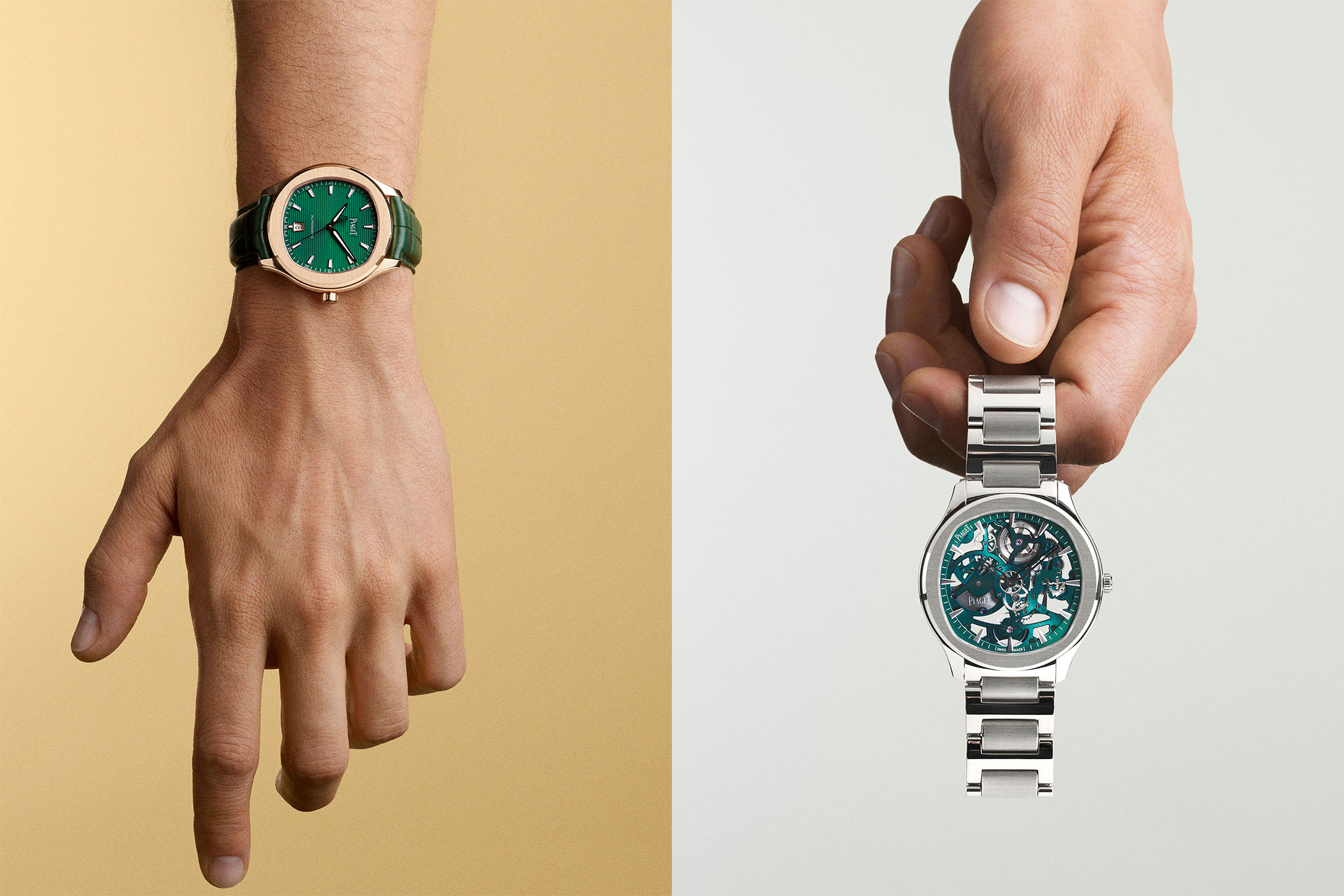
2023: Piaget Polo Perpetual Calendar Ultra-thin
In recent years, the Piaget Polo line has grown rapidly, with an impressive range of watch models, from simple and very sporty models with rubber (Piaget Polo Date in black) to complicated creations with minute repeaters and flying tourbillons or even diamond-studded versions. The complicated models have so far appeared in a sub-line of the Piaget Polo called Piaget Polo Emperador. In 2021, a version for ladies was added in the form of the Piaget Polo Date 36 mm.
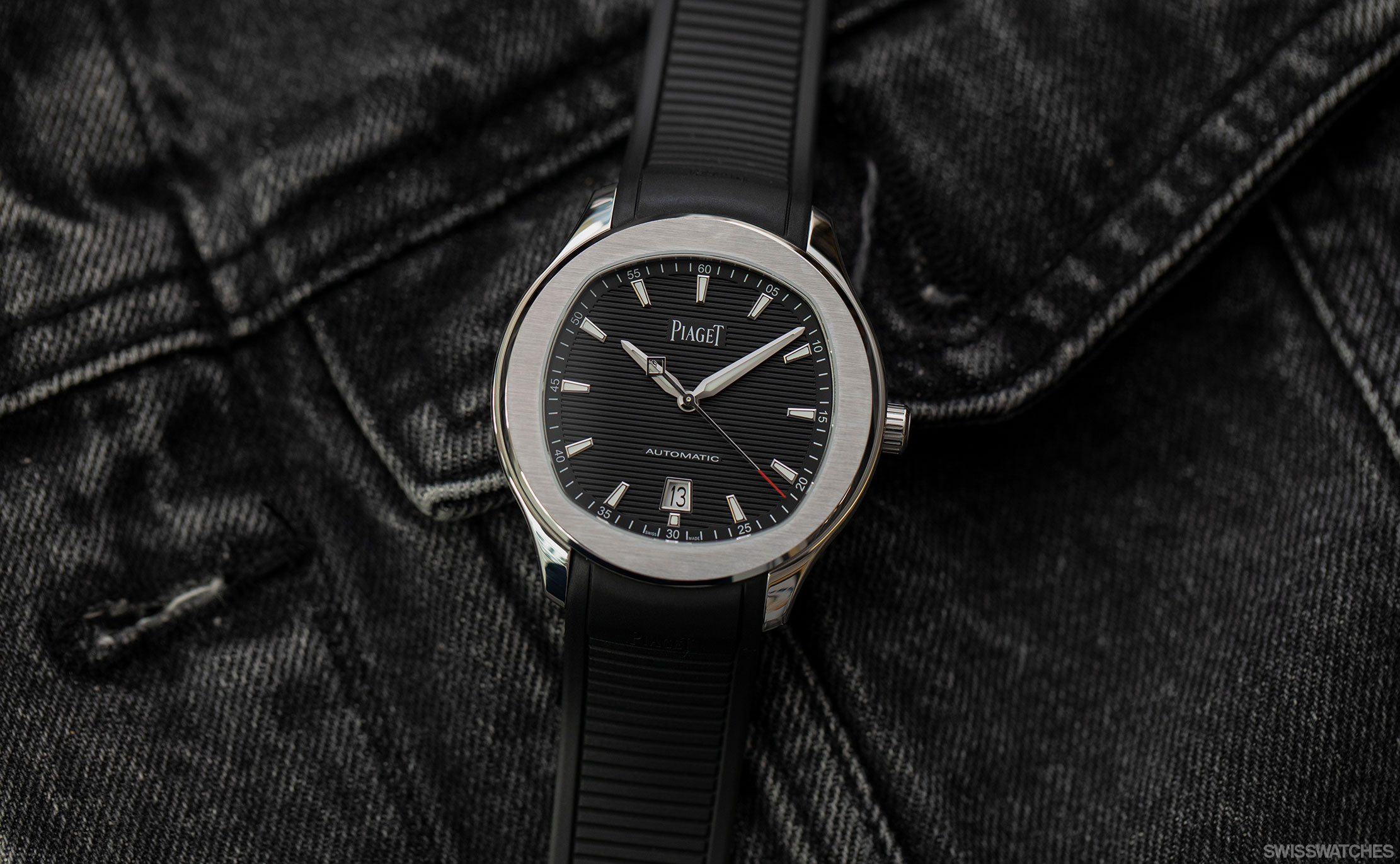
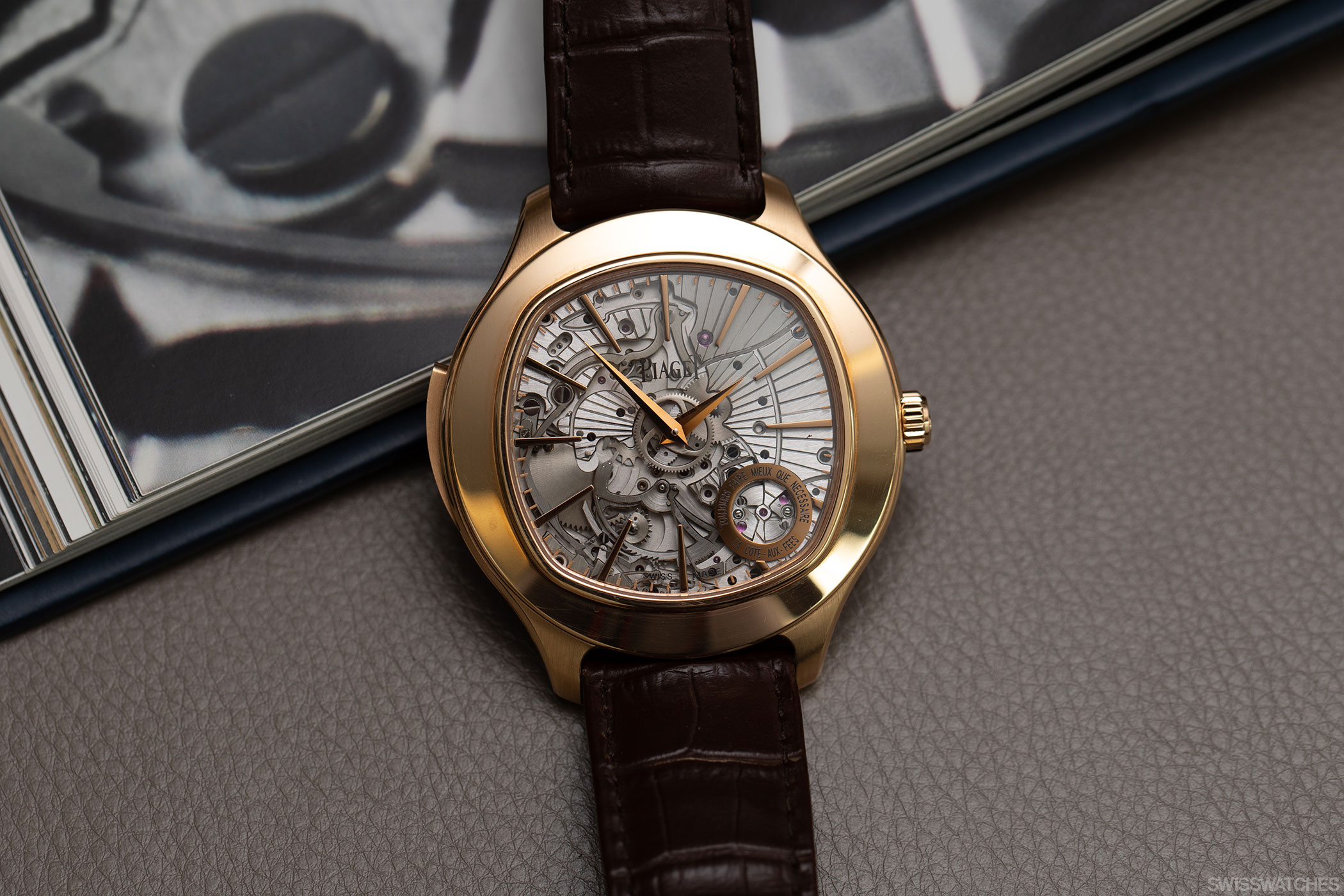
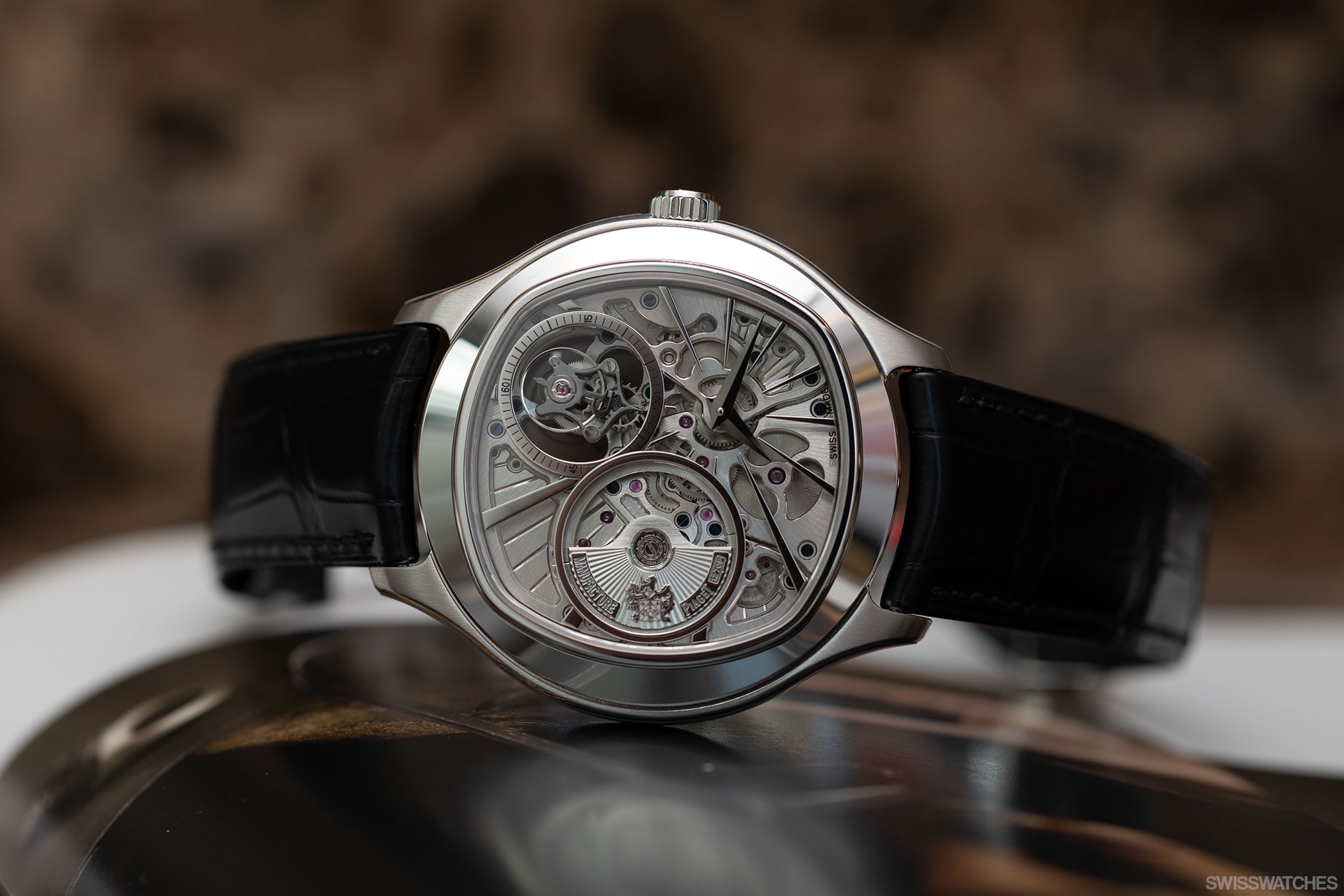
Now, for the very first time, Piaget presents a Piaget Polo with a perpetual calendar, and at the same time, a brand-new movement that undercuts the previous 855P calendar movement by another 1.6 mm in height.
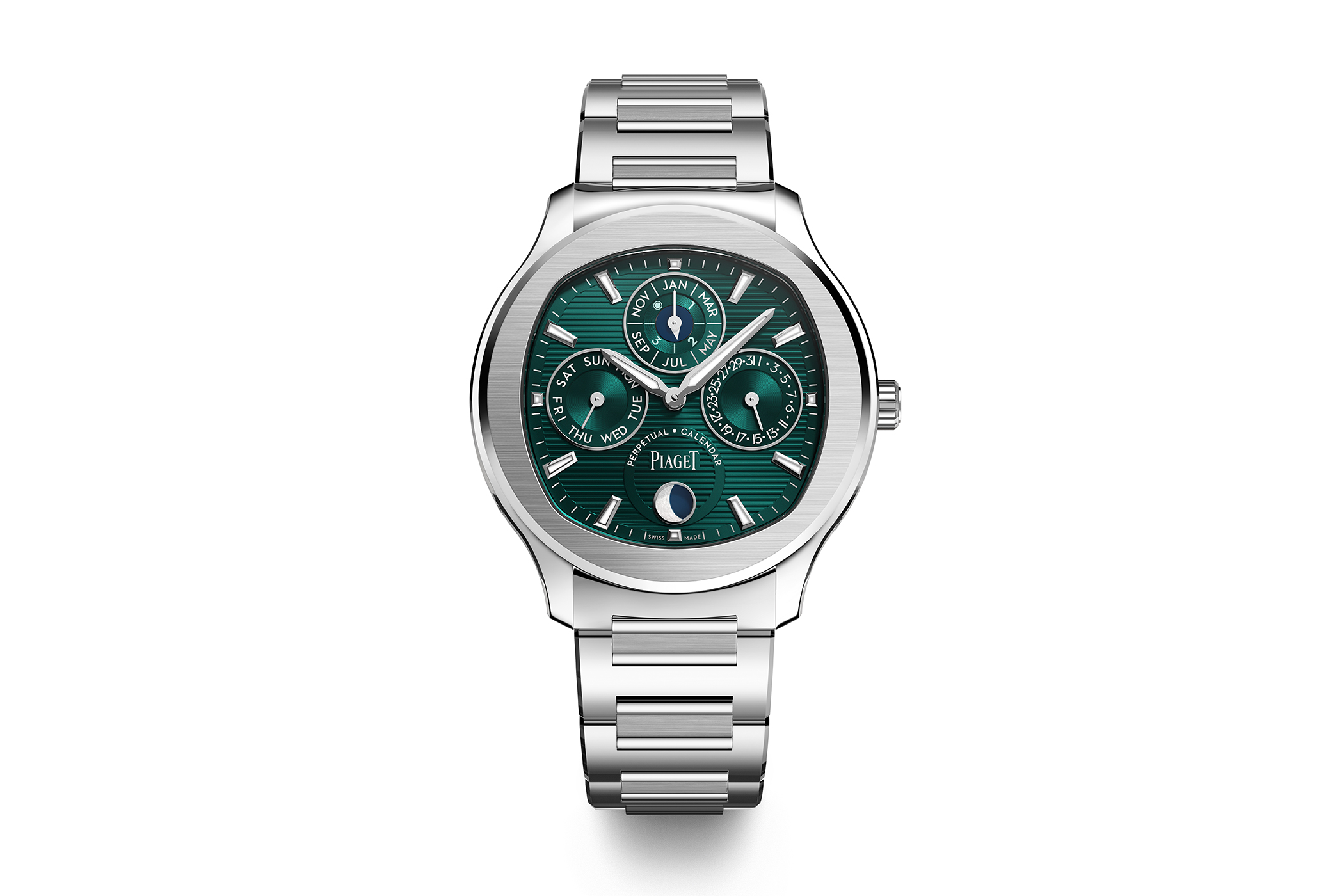
The new ultra-thin calibre 1255P is based on the calibre 1200P and is just 4 mm high. The overall height of the new Piaget Polo Perpetual Calendar Ultra-thin is thus 8.65 mm. Calibre 1255P is designed to correctly display the day, date and year up to the year 2100. A moon phase as well as leap year indication have also been integrated. For the dial, the watch house has opted for an emerald-green variant with the typical gadroon, as it did already in 2019.
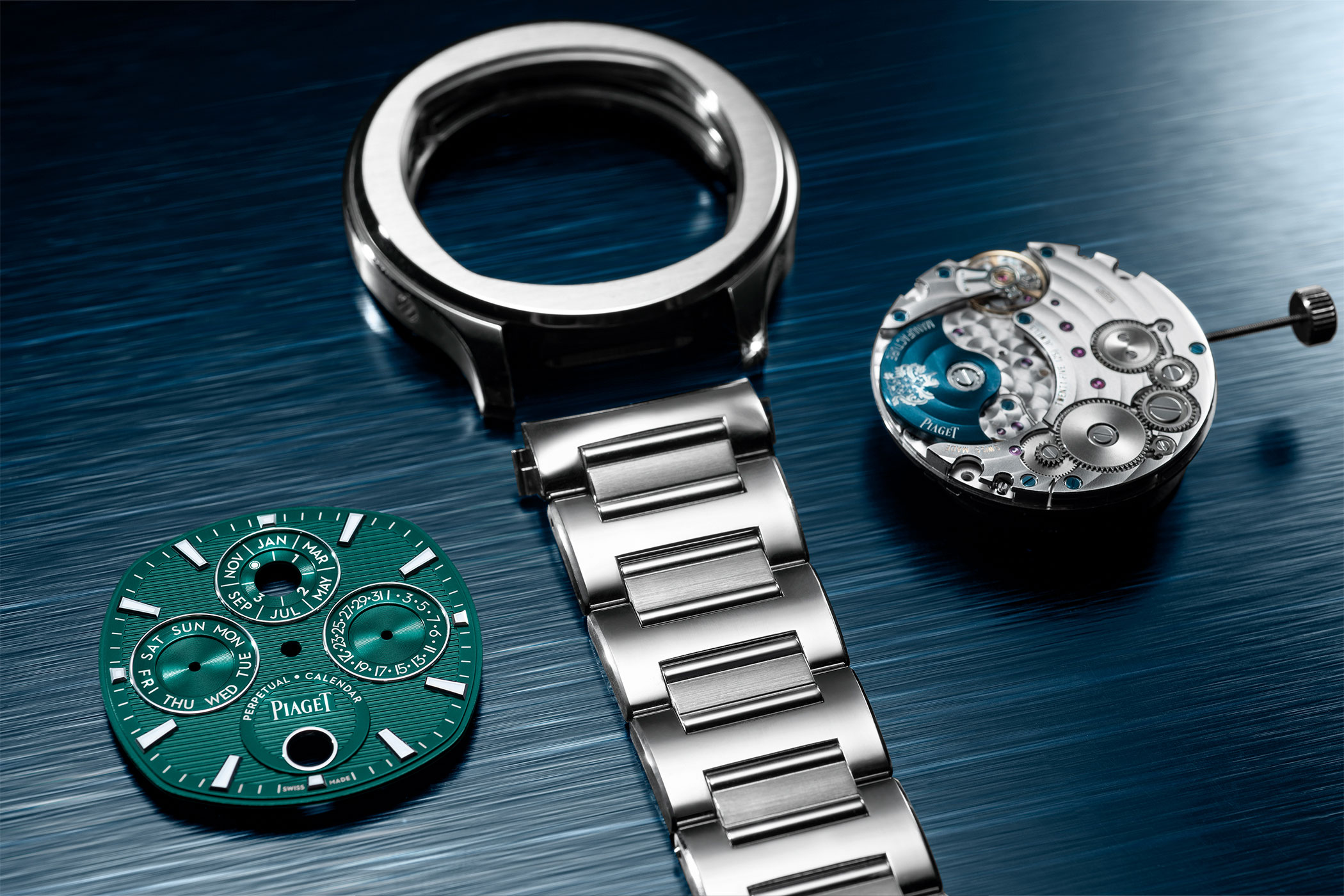
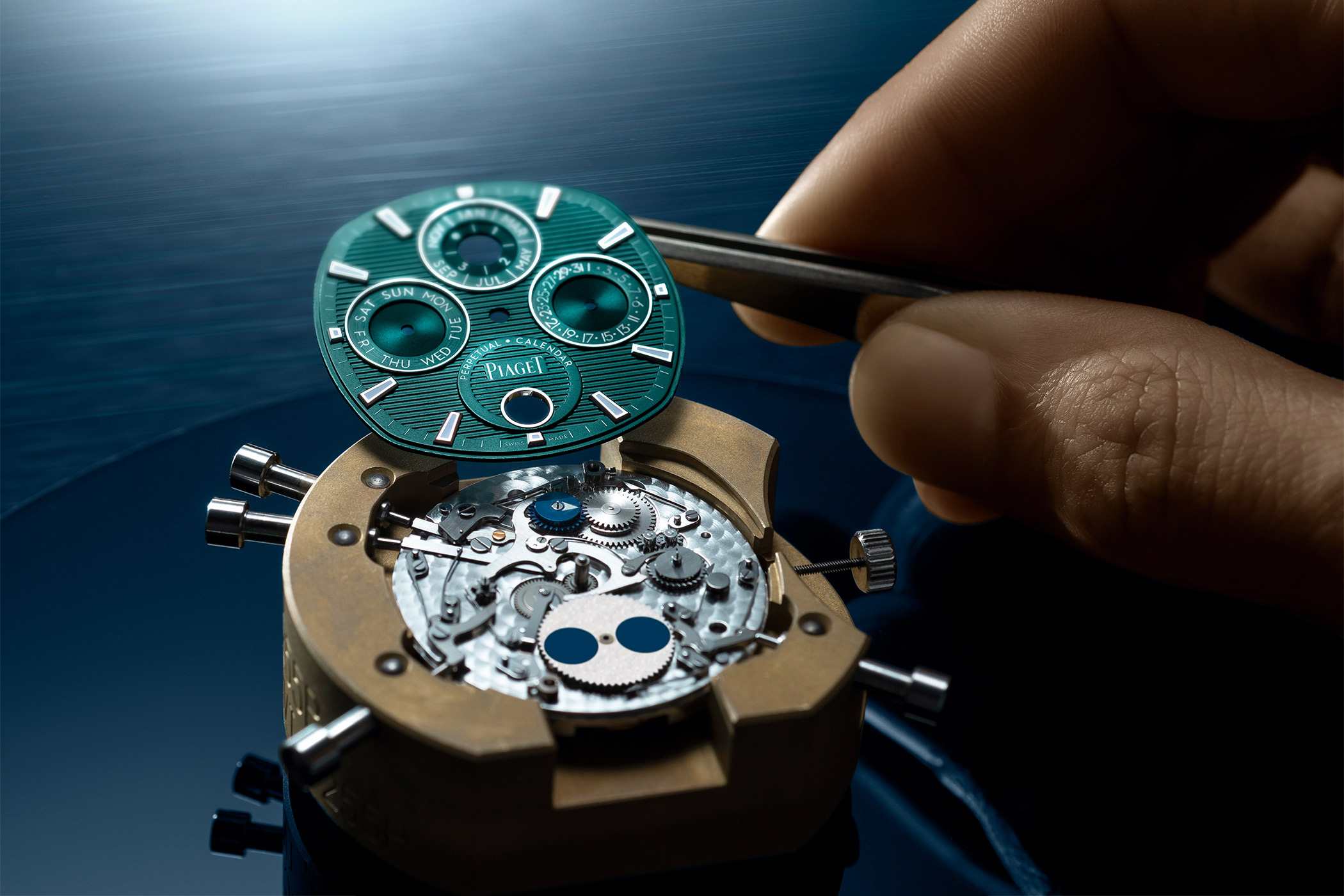
The displays for the day of the week, month and date have different surface finishes. Also new is the SingleTouch interchangeable bracelet system. The new model also comes with a rubber strap echoing the gadroon pattern on the dial.
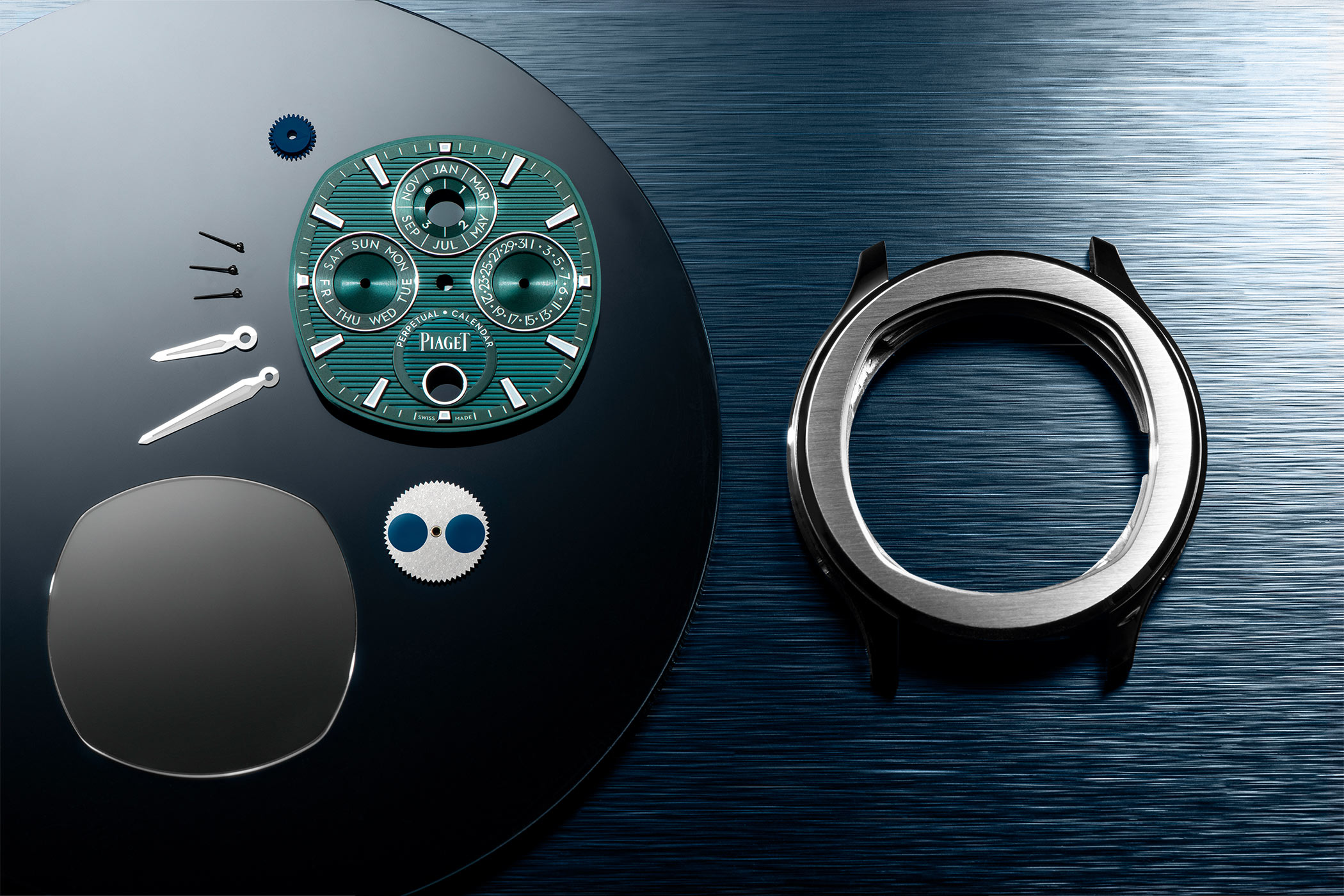
Golden times for the Piaget Polo
The new Piaget Polo seems destined to have a rosy future. It has caught on as it did in 1979, and is now in fact Piaget’s best-selling watch line. It will be exciting to see how it evolves, too. Will – like Vacheron Constantin did recently with their Reference 222, the precursor to the Overseas – the original design ever have a revival? Should it even?
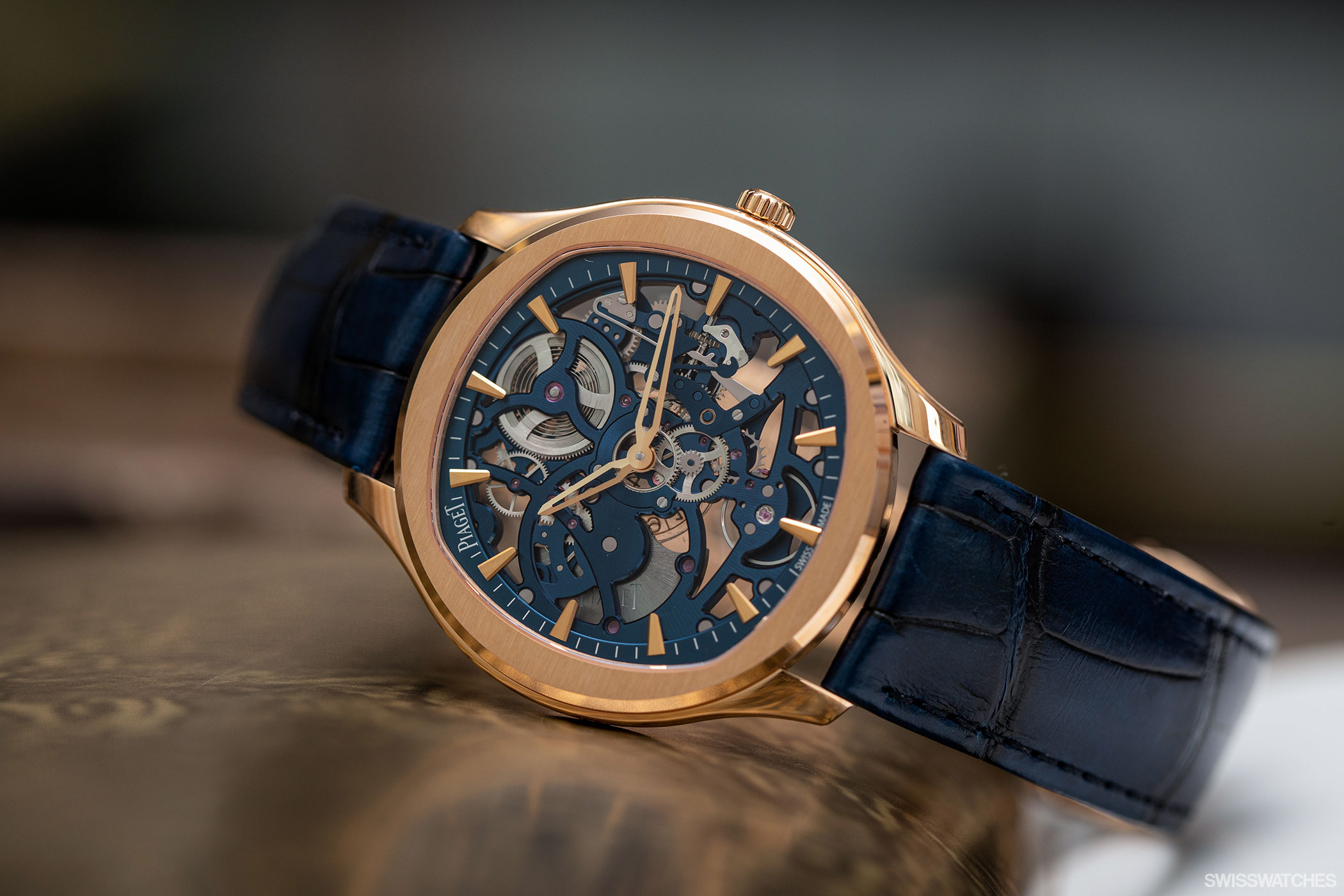
Perhaps the design needed to be changed to keep up with the times, for would the gold Piaget Polo with its gadroons of yesteryear fit into the tastes matching to sports watches today? It was brave – and risky – for Piaget to change a watch classic so radically. Nevertheless, even if some parameters have shifted, it is fair to say that its modern face is etched in our minds, almost as though it had never been any other way.
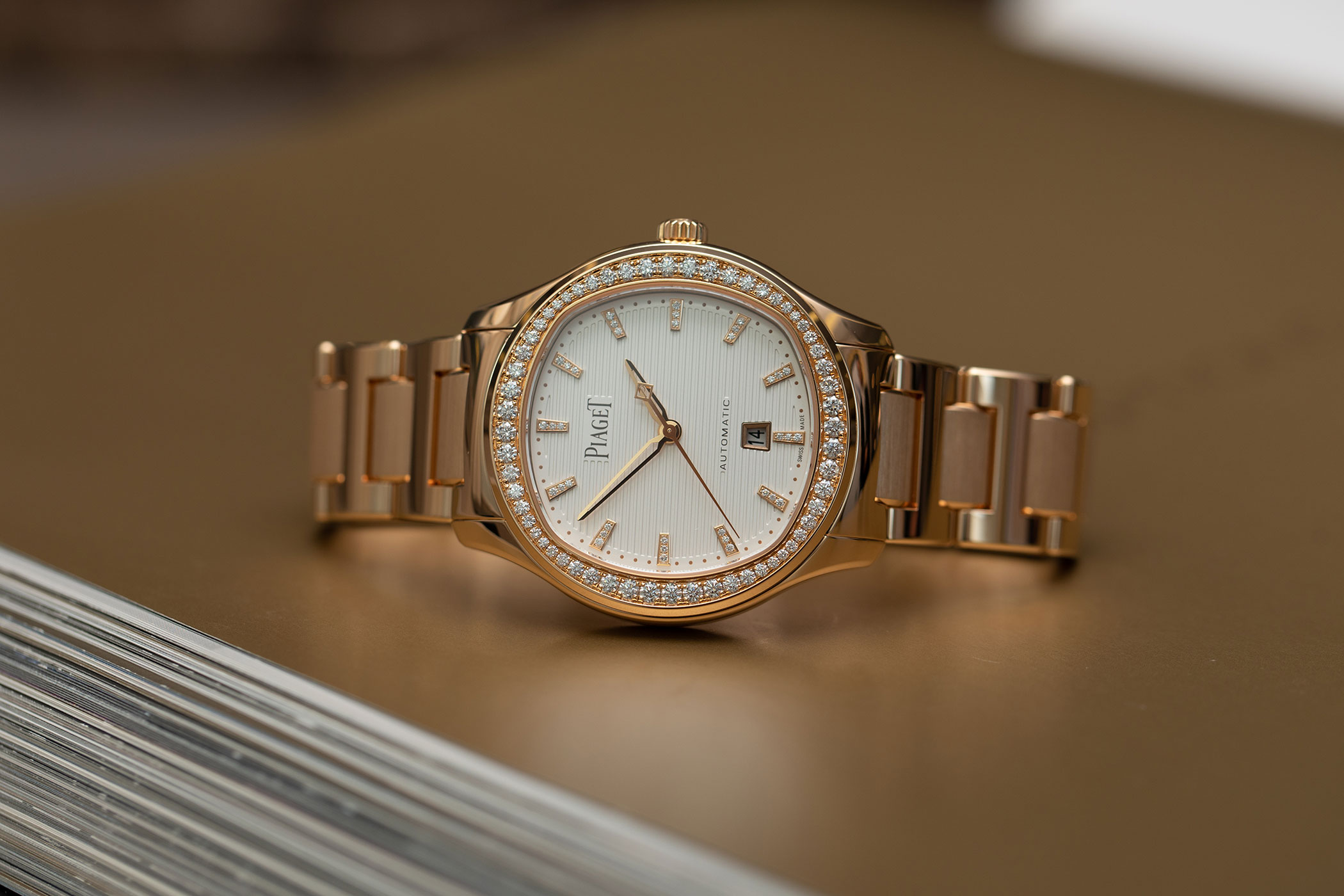
Photo Credit © Piaget
